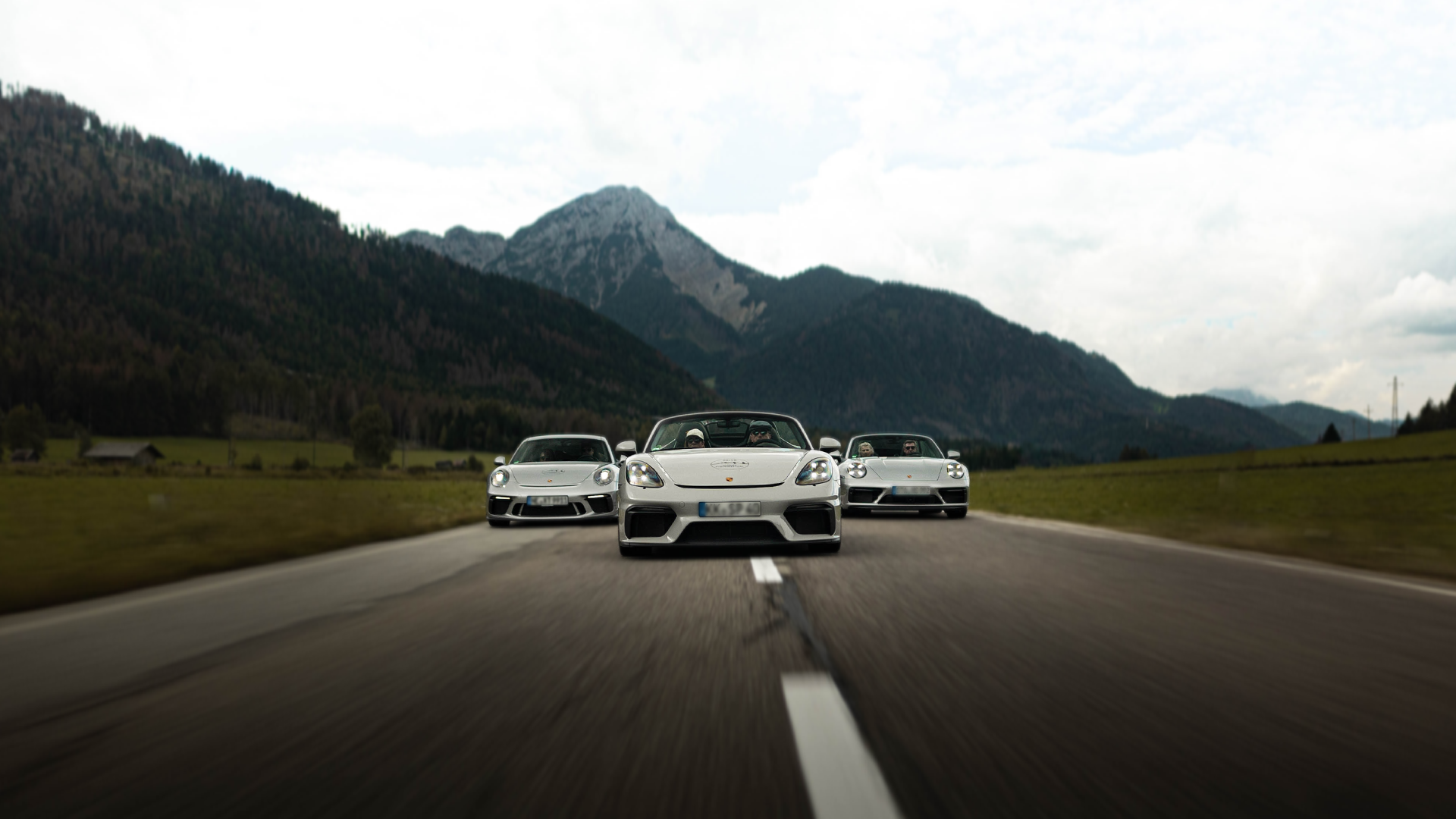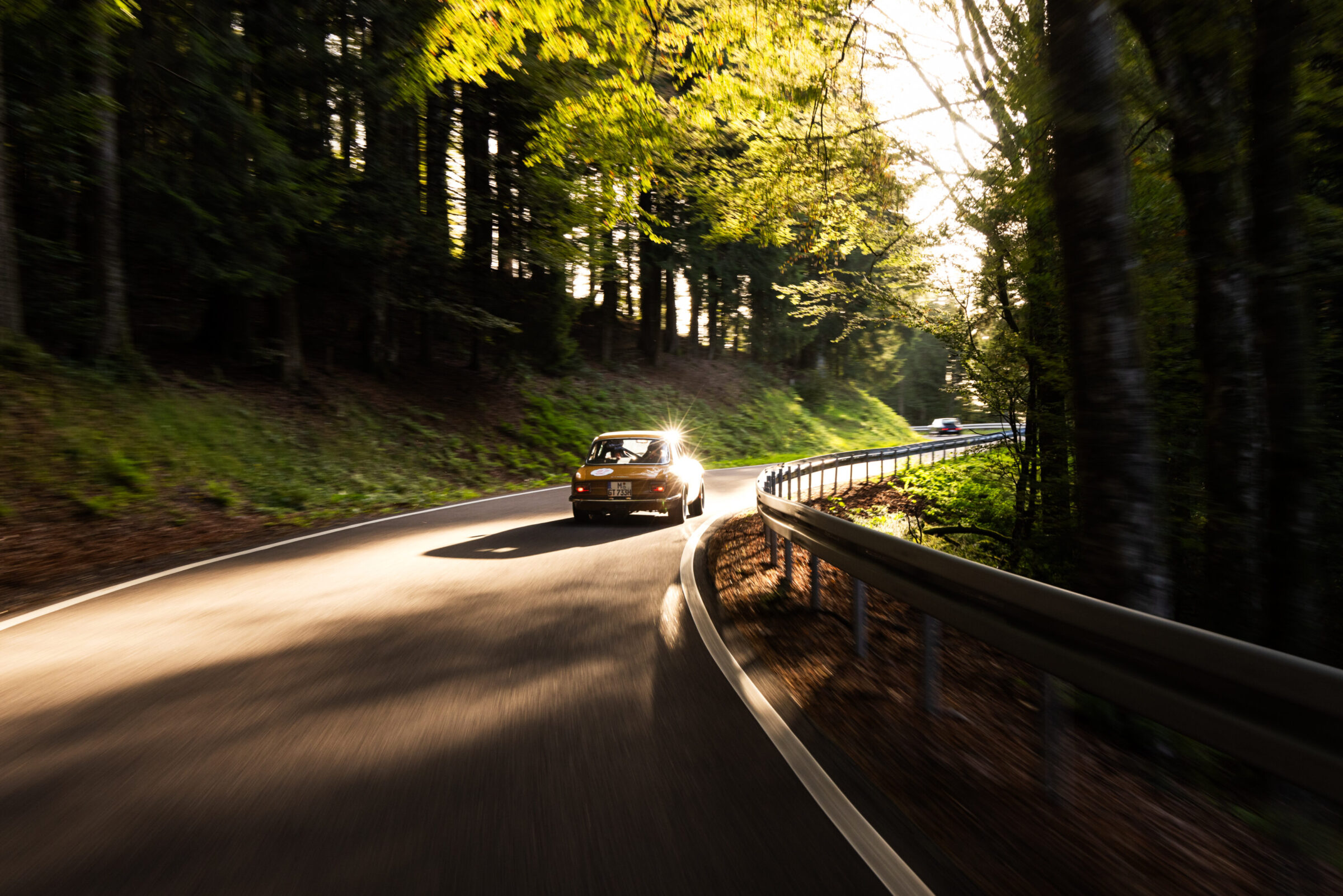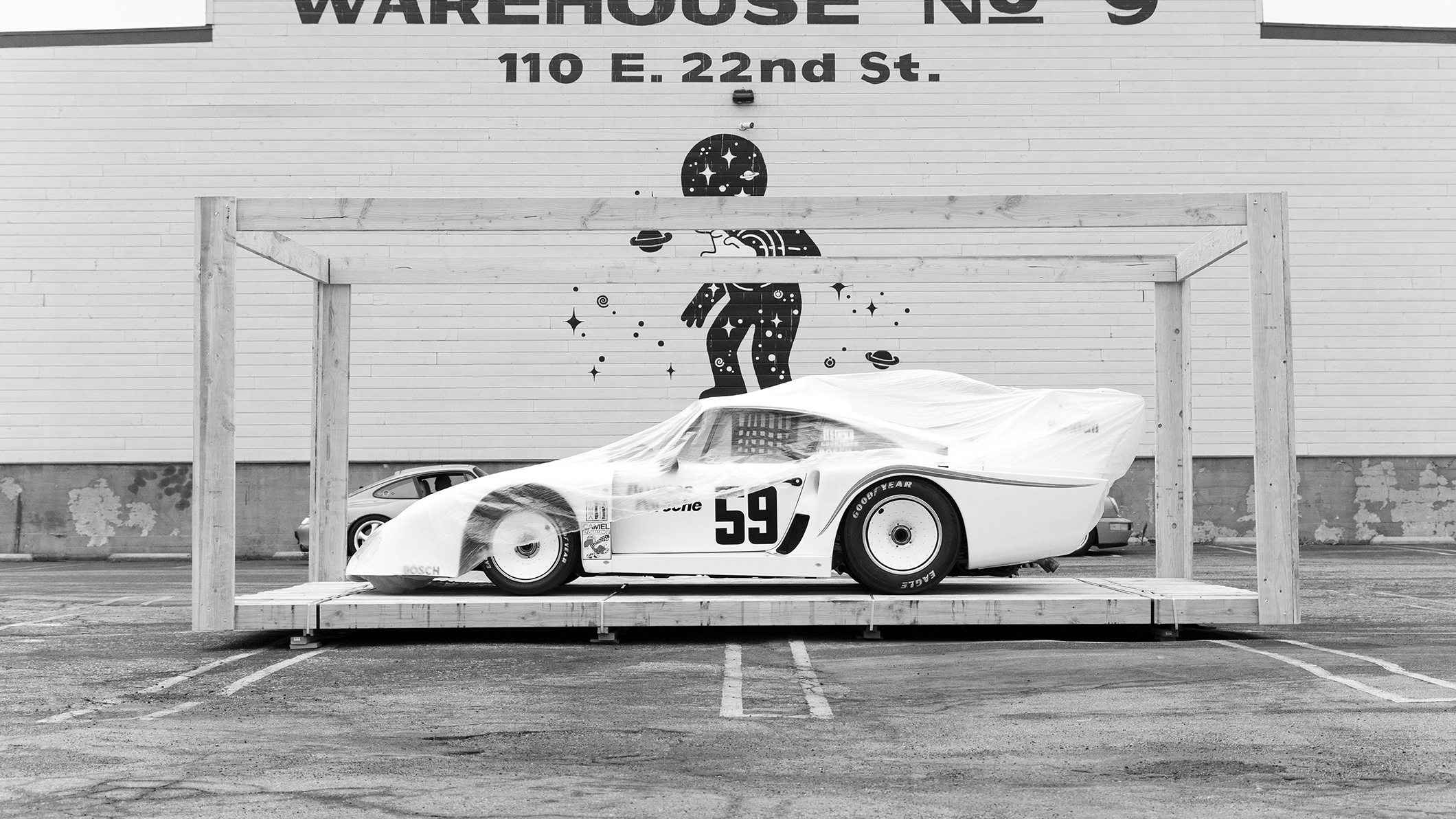So British!
In the center of the Belgian capital Brussels, there has been a car museum worth seeing, the Autoworld, for several decades. The majority of the vehicles constantly on display here come from the collection of Ghislain Mahy, whose reserve is housed in a separate museum in Leuze-en-Hainaut. In addition to numerous exhibits that show the times of Belgian car manufacturers, Autoworld also exhibits cars from the entire period between 1886 and the 1990s. Over the course of the respective turns of the year, the Belgians organise large special exhibitions that are well worth seeing, while during the course of the year, smaller areas in the actual museum put special car-related topics in the spotlight. Until Sunday 26th January, Autoworld is showing a special collection of British cars and motorcycles under the title ‘So British!’.
Directly behind the entrance, two special areas show current British SUVs from the Mini Countryman to the Bentley Bentayga on the one hand, and sports cars and luxury vehicles from the current production of Bentley, Rolls-Royce, Jaguar and McLaren on the other. At the rear of the ground floor, five racing cars from the years 1950 to 2003 are on display, while a rare MG B with a Berlinette conversion by Belgian coachbuilder Coune shines on its own platform. This type was once produced 56 times of which 14 are still known today. At the time of our visit a brand new Rolls-Royce Phantom and the McLaren 675LT Spider of the Belgian YouTube star POG were also in the central aisle of the museum. Visitors who are only interested in the special exhibition and not in the rest of the museum’s collection, which is worth seeing, can now reach the first floor and the generously designed area there for these special events via two different staircases. In earlier years, special Italian and American cars, the brands Porsche and Bugatti or the successful racing cars of Belgian racing drivers were presented here.
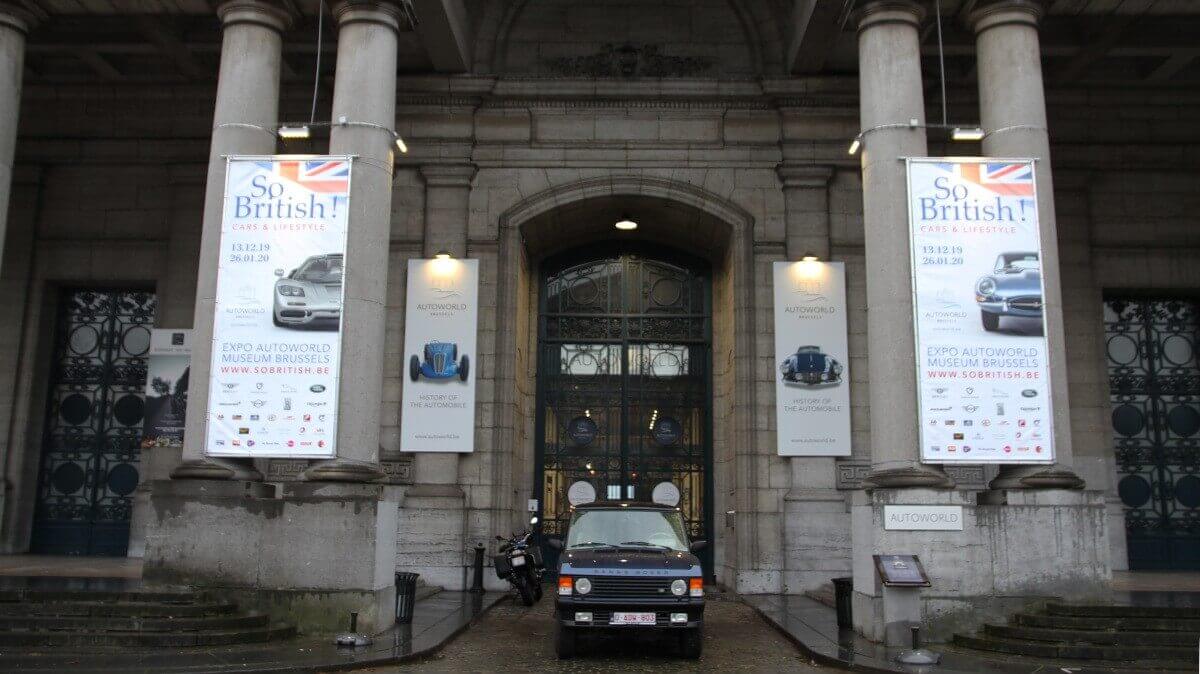



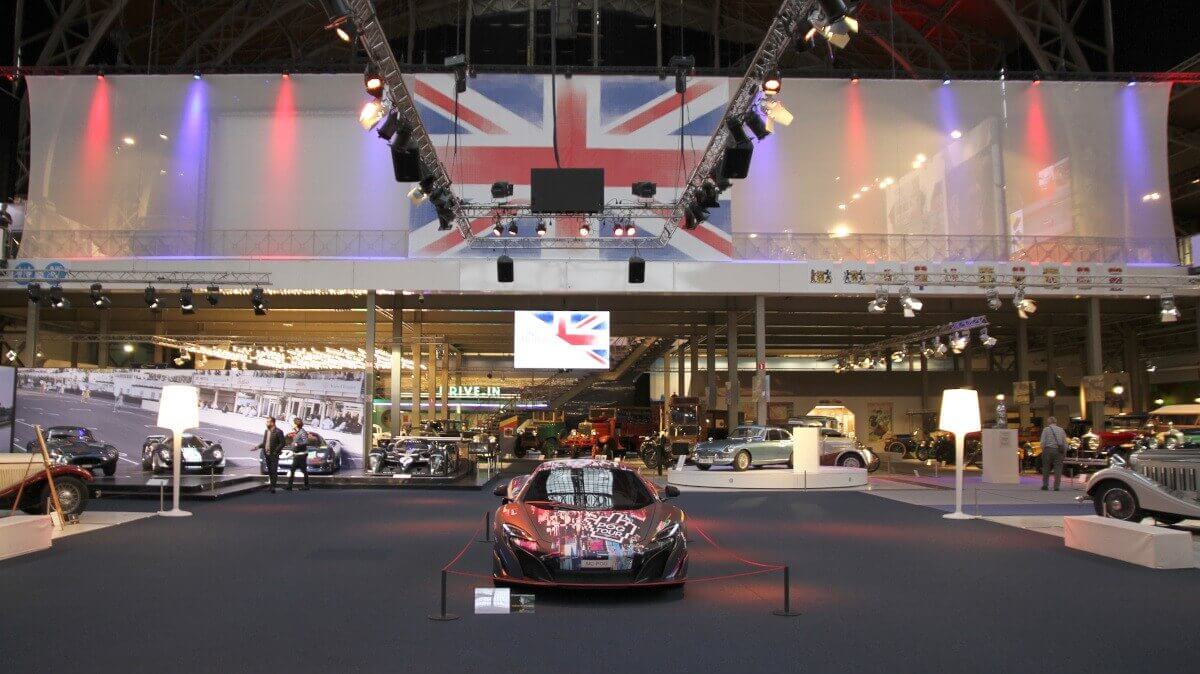



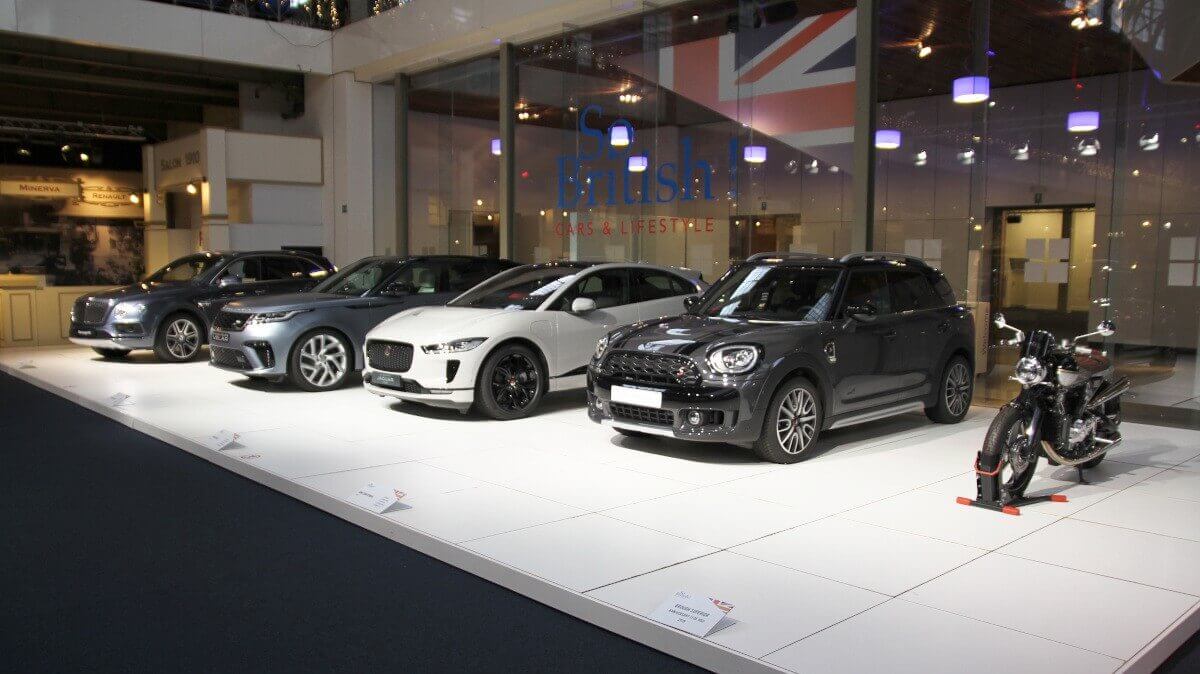



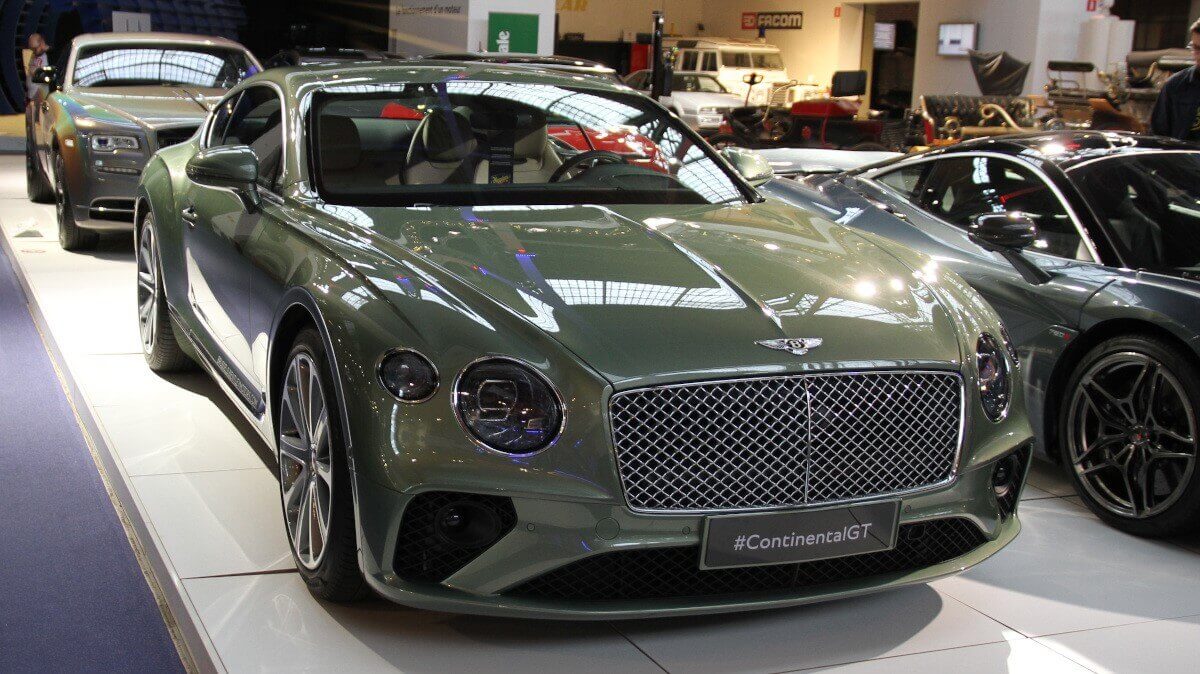



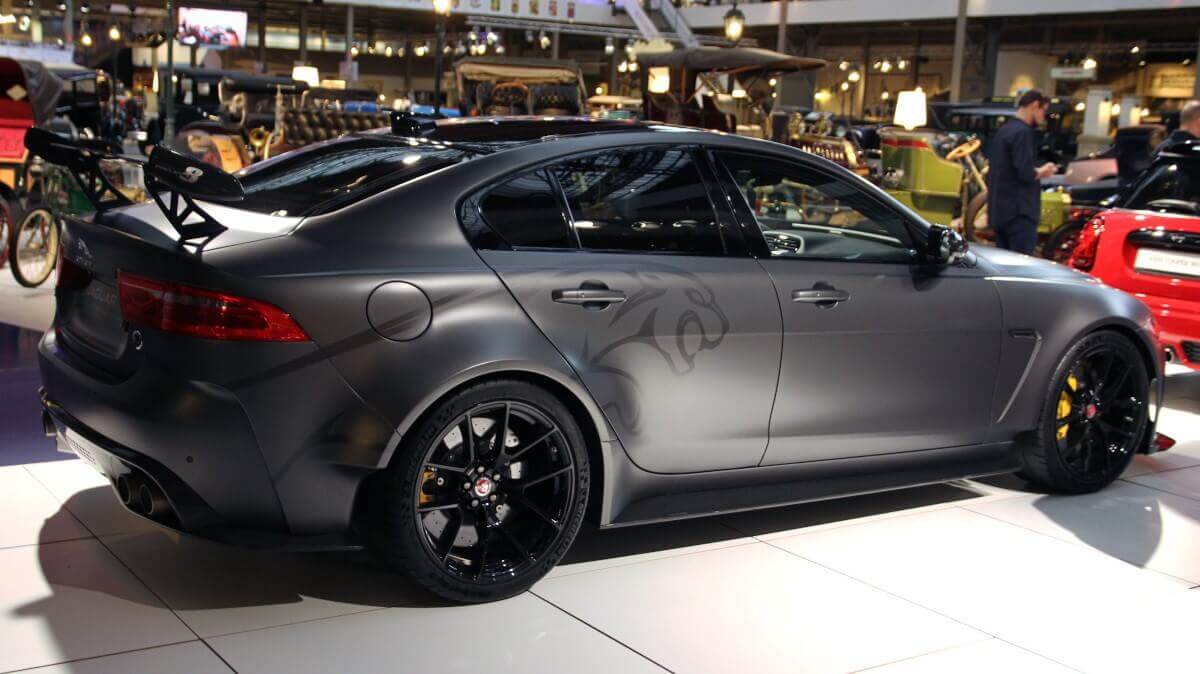



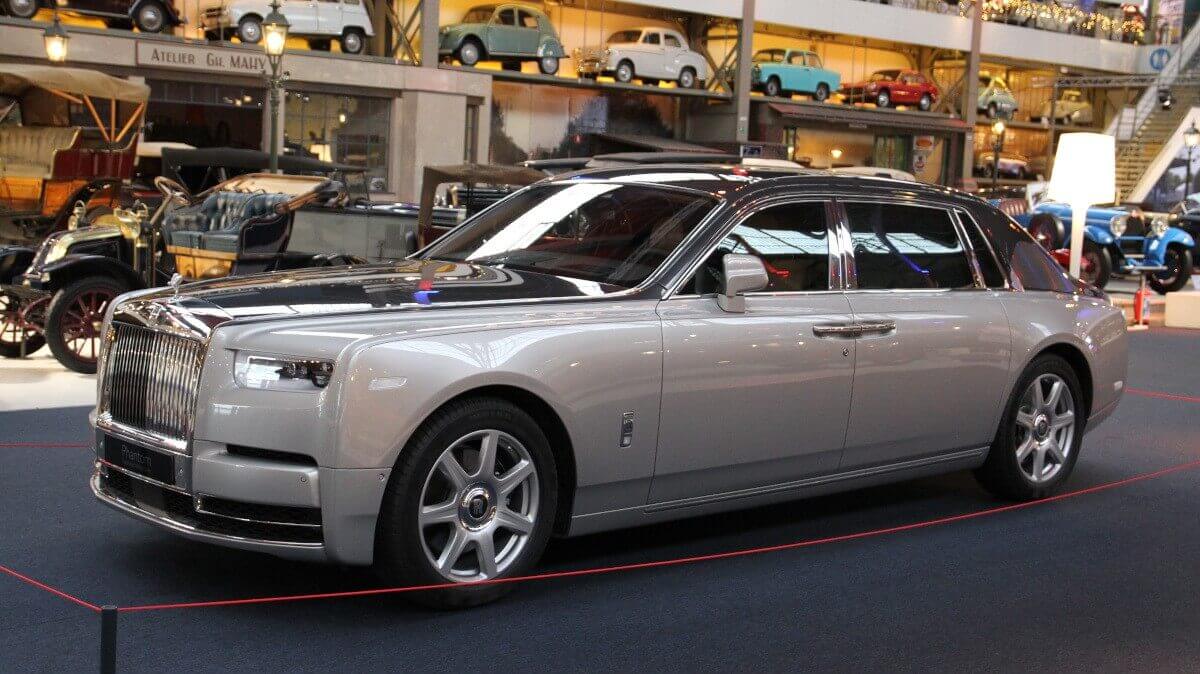



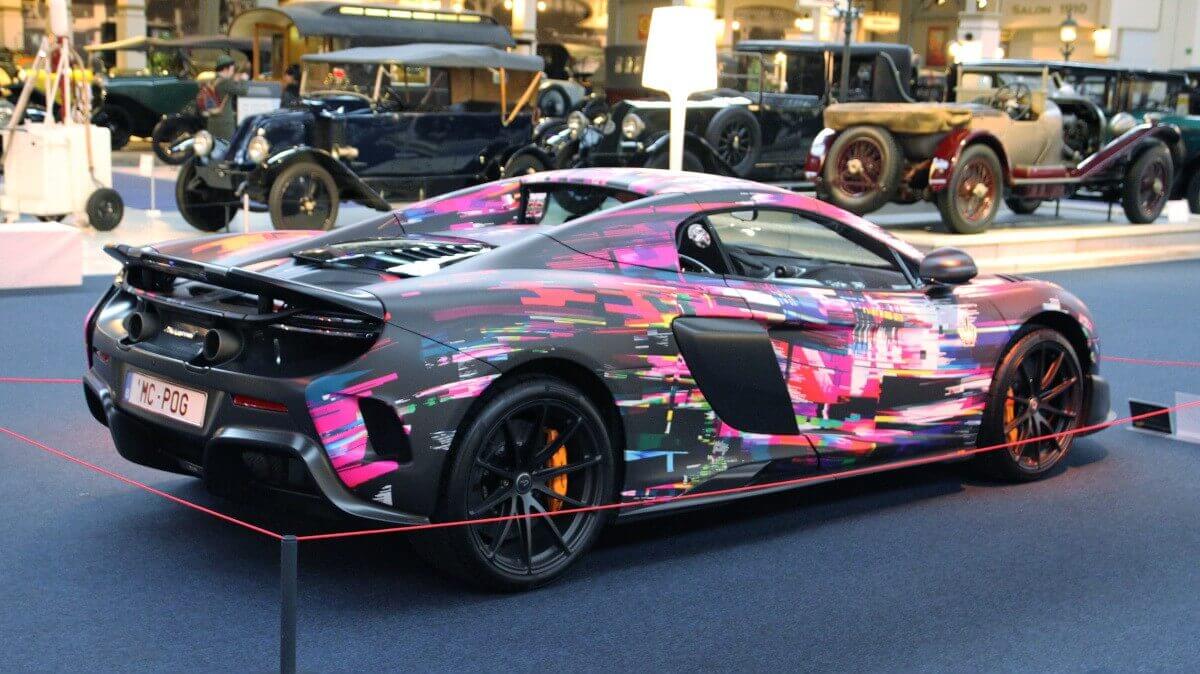



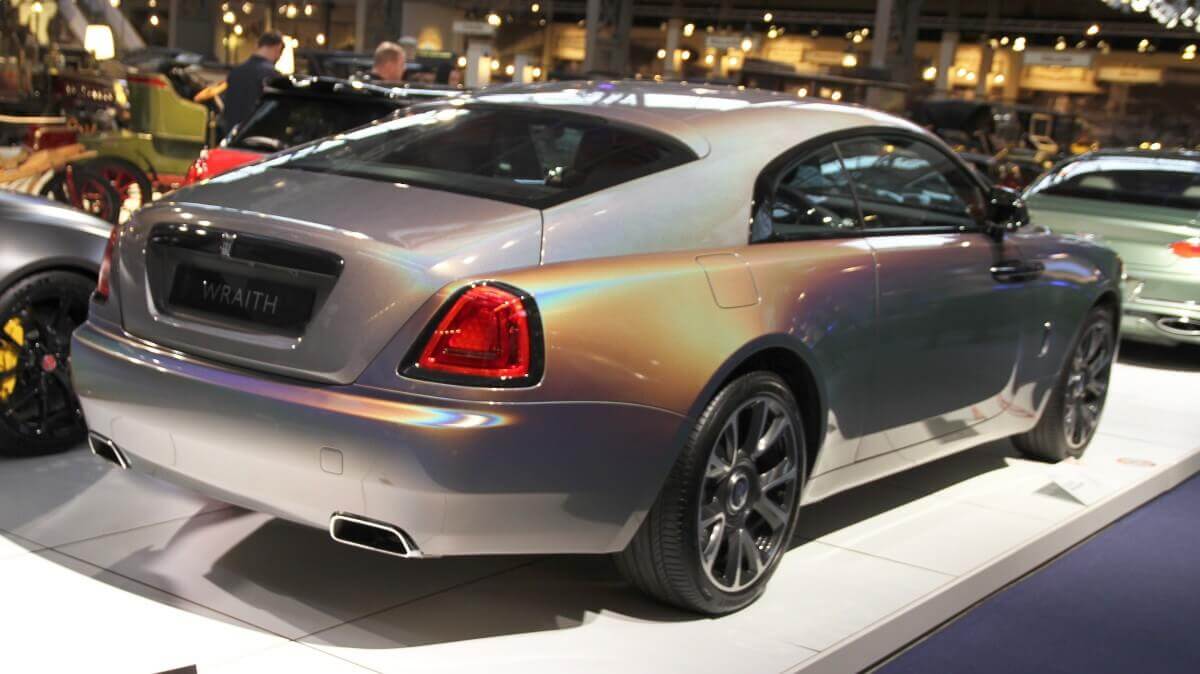



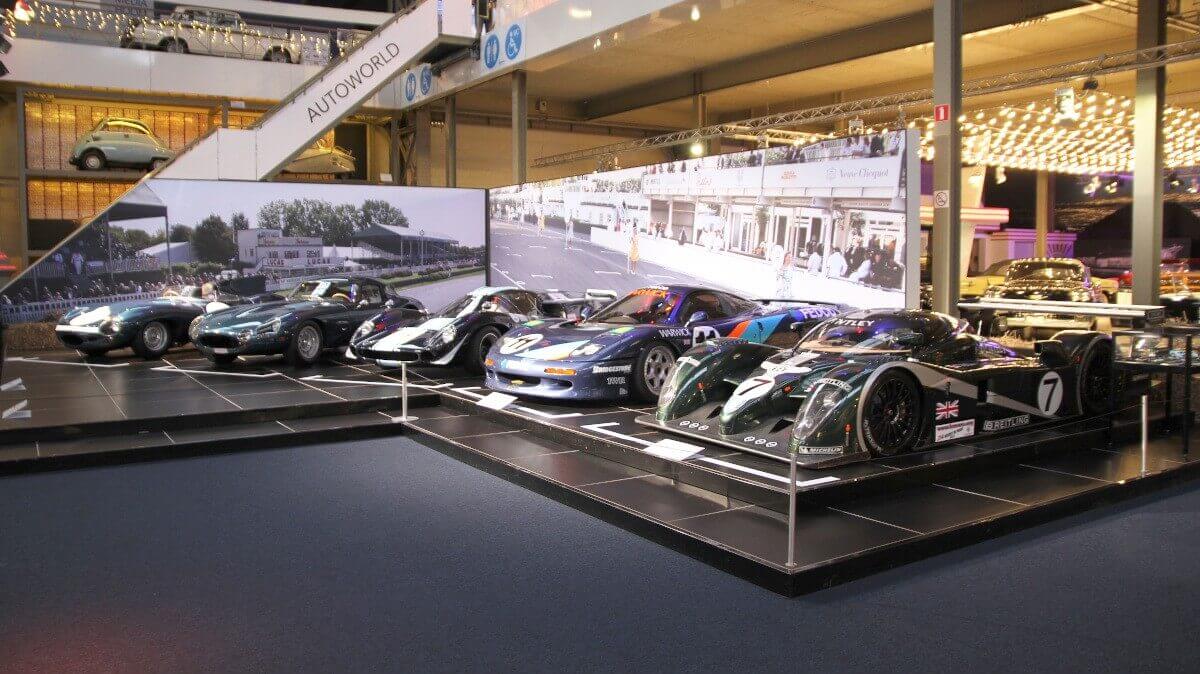



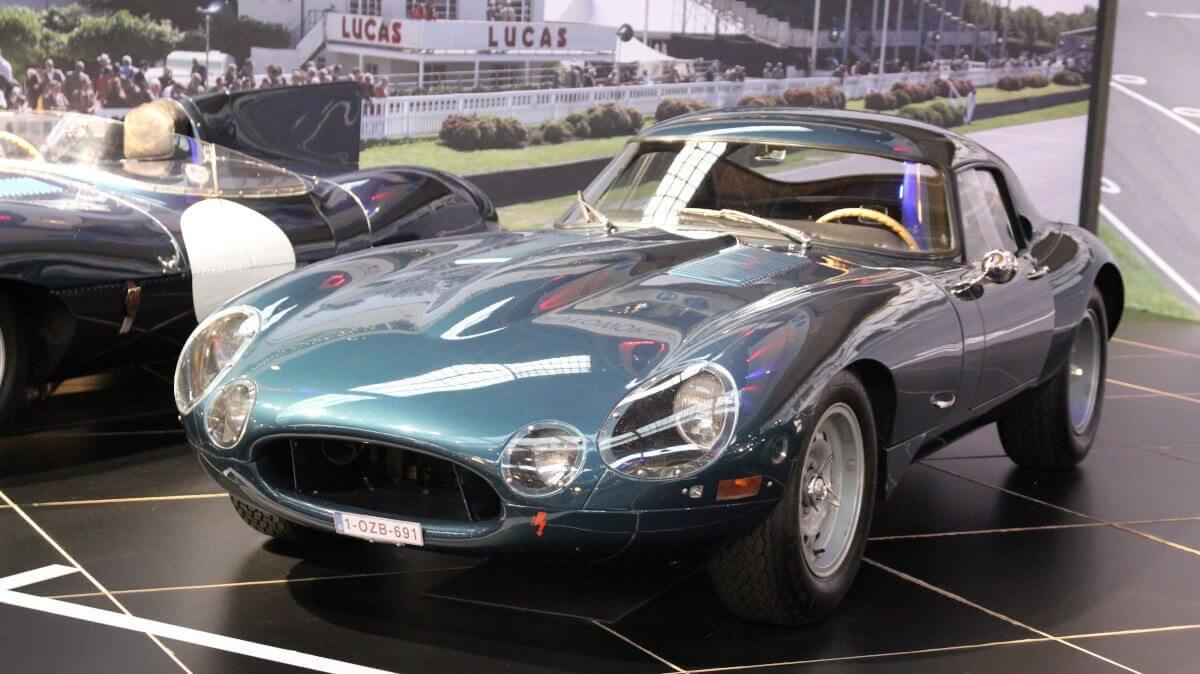



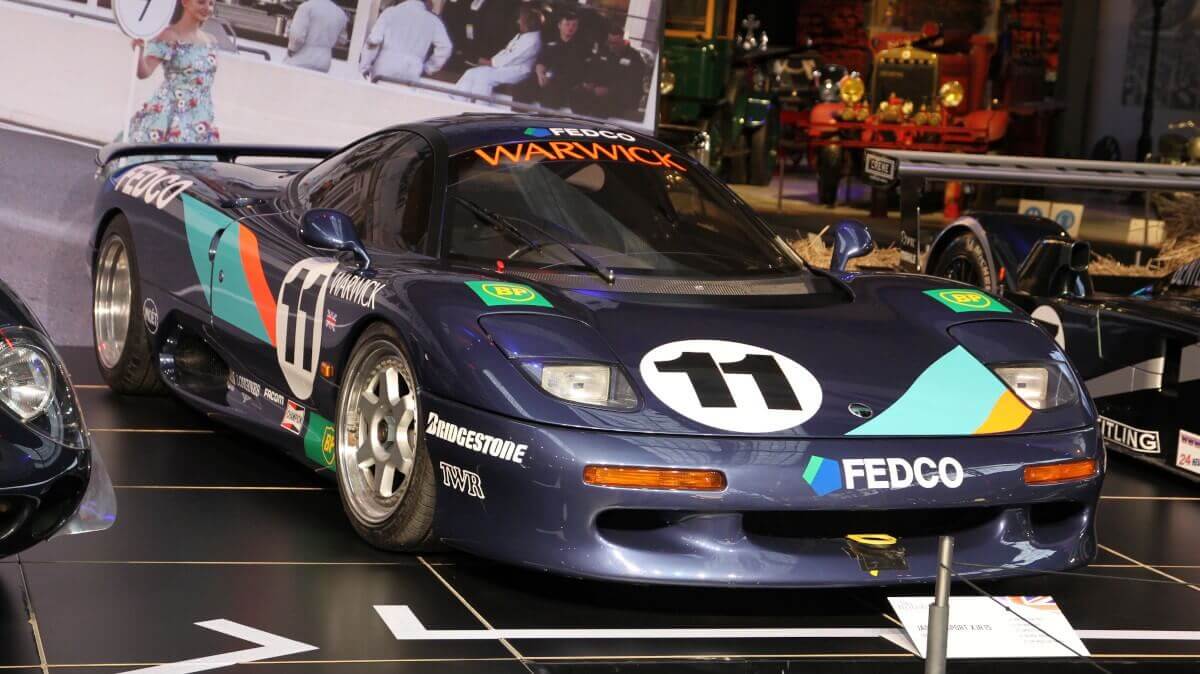



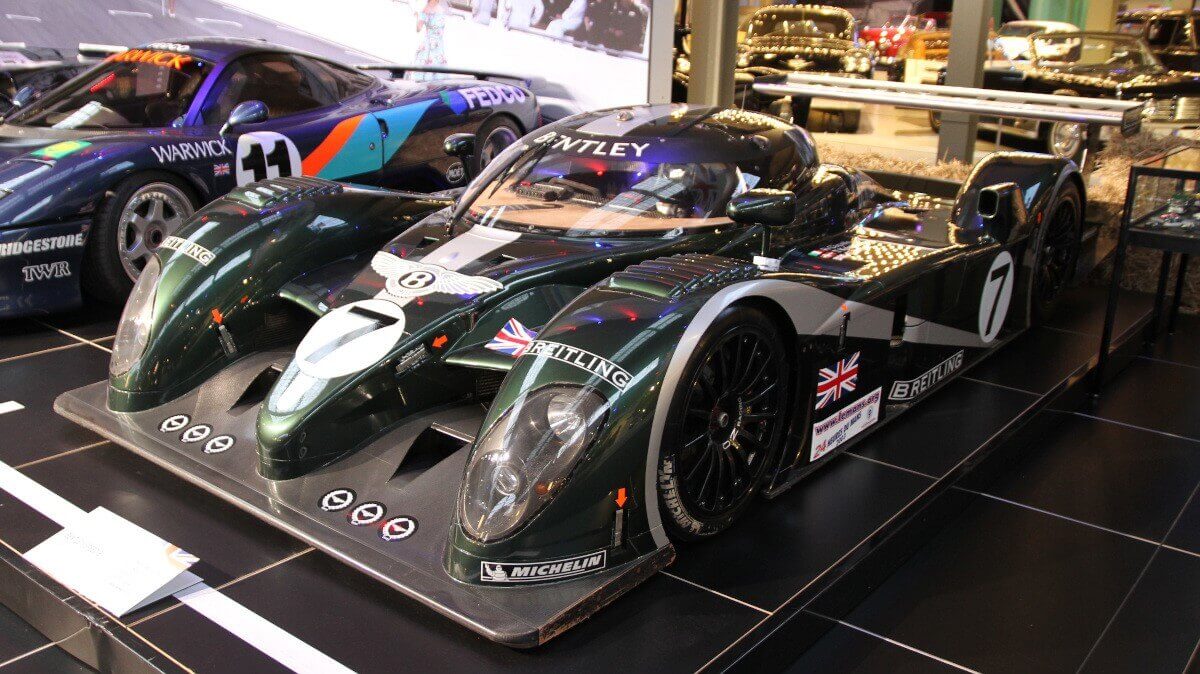



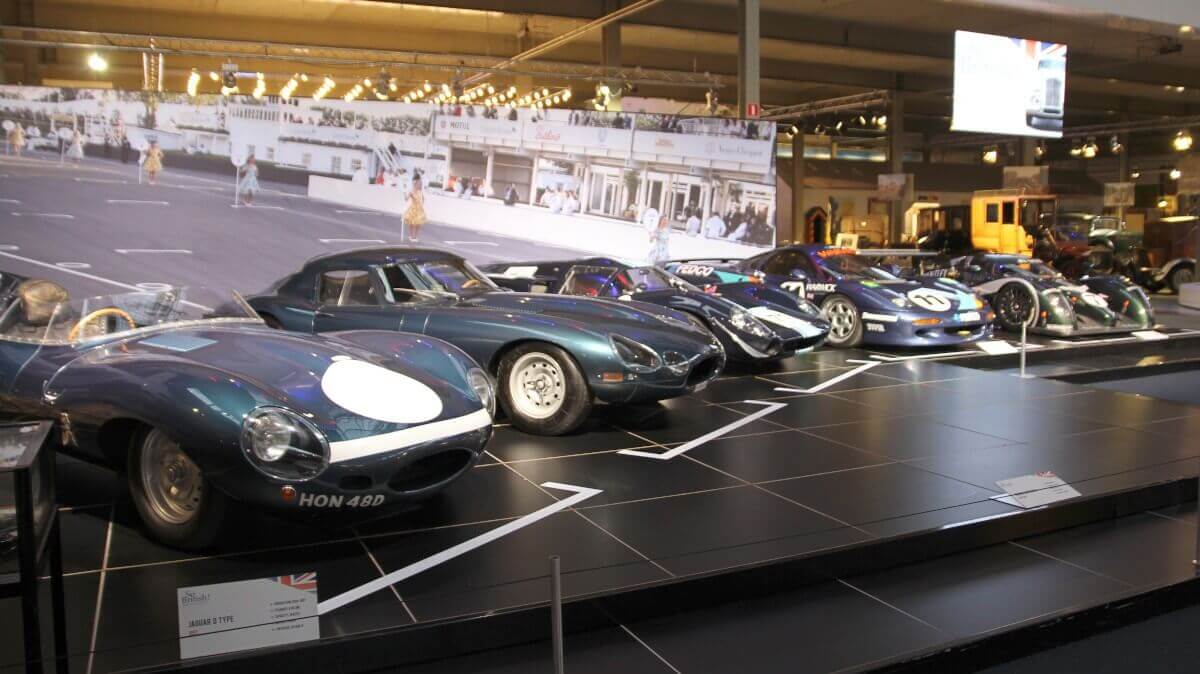



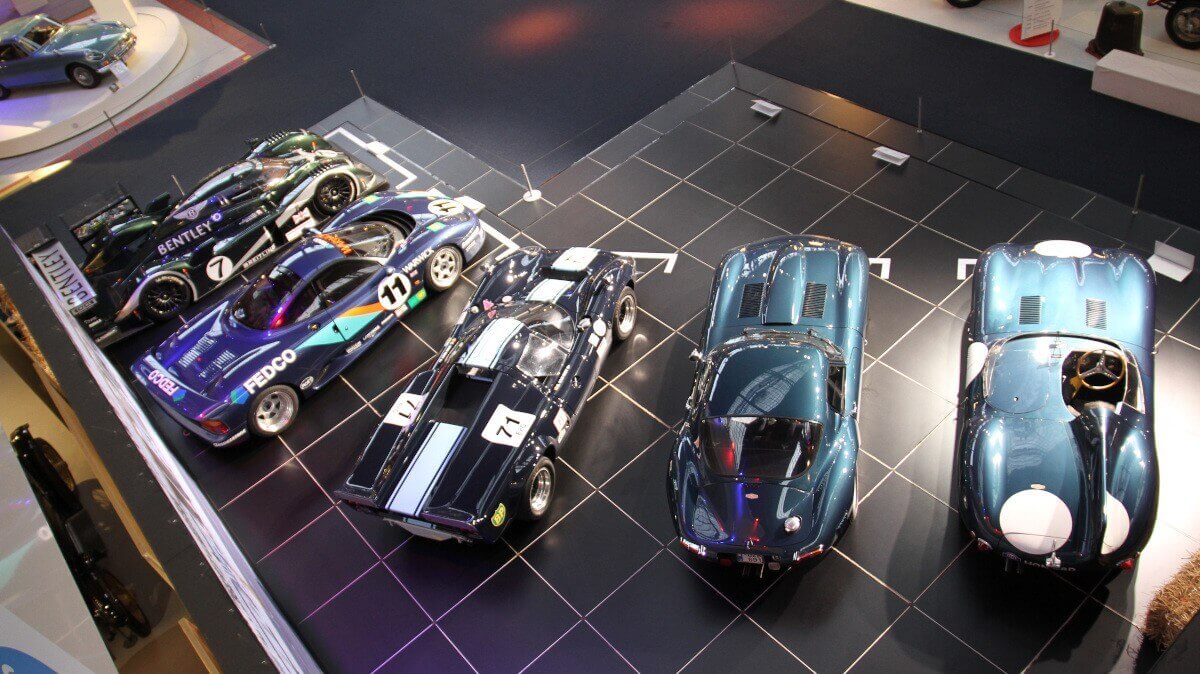



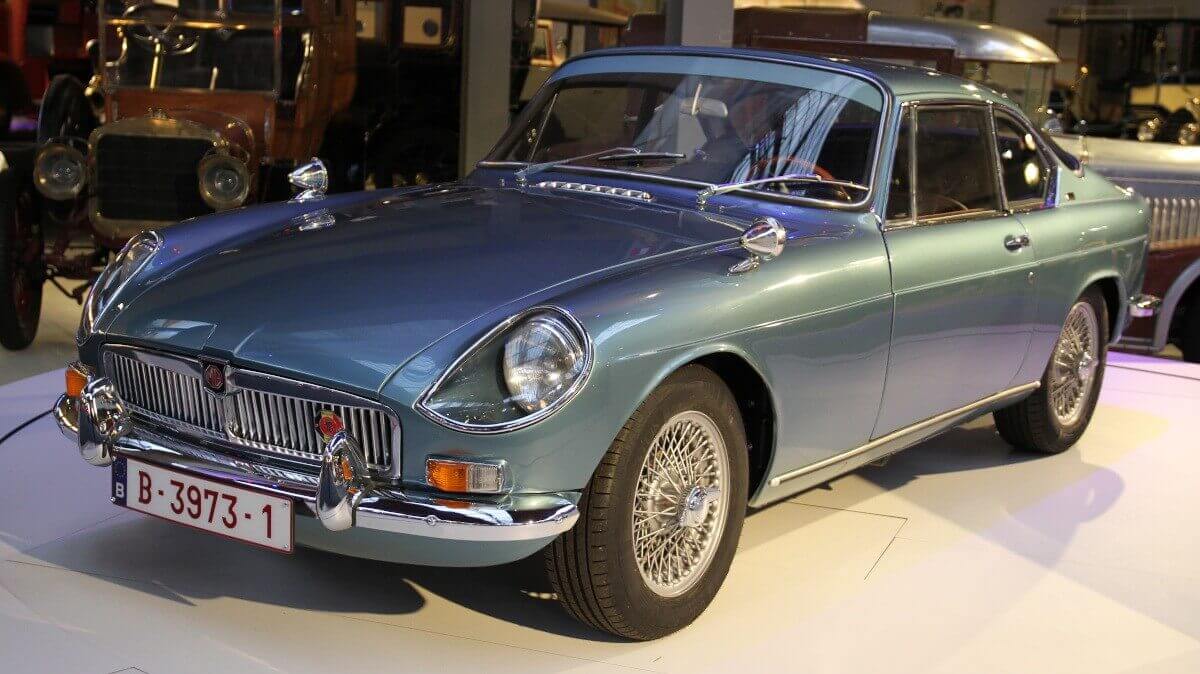



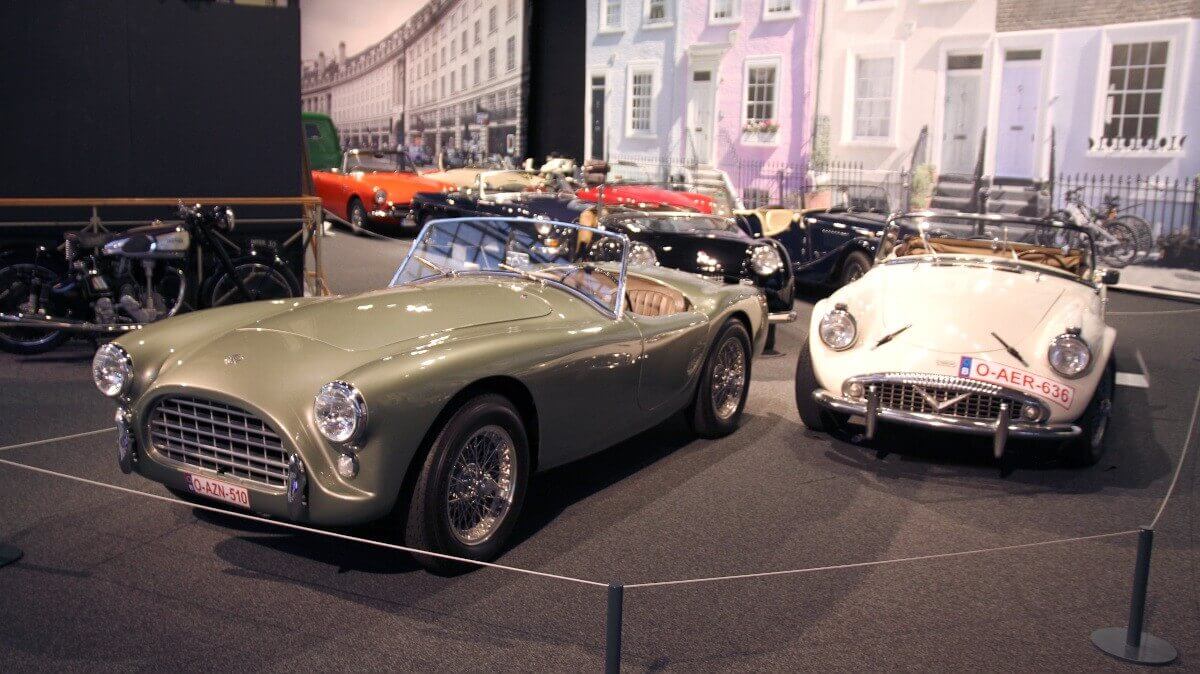



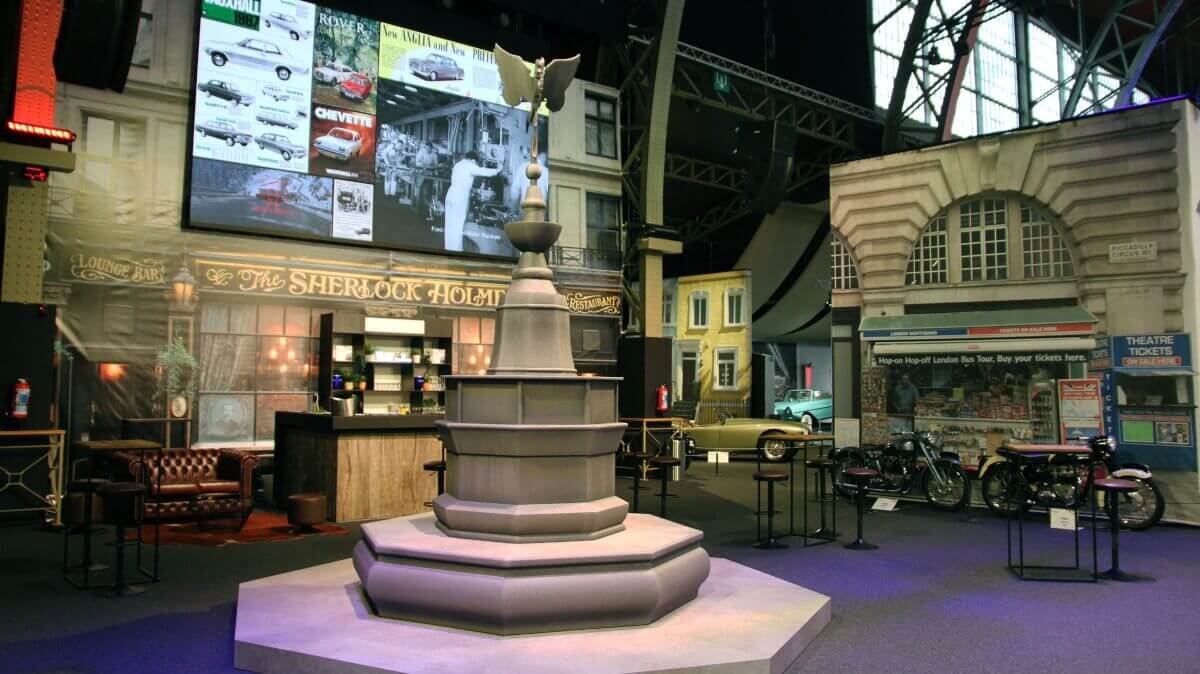



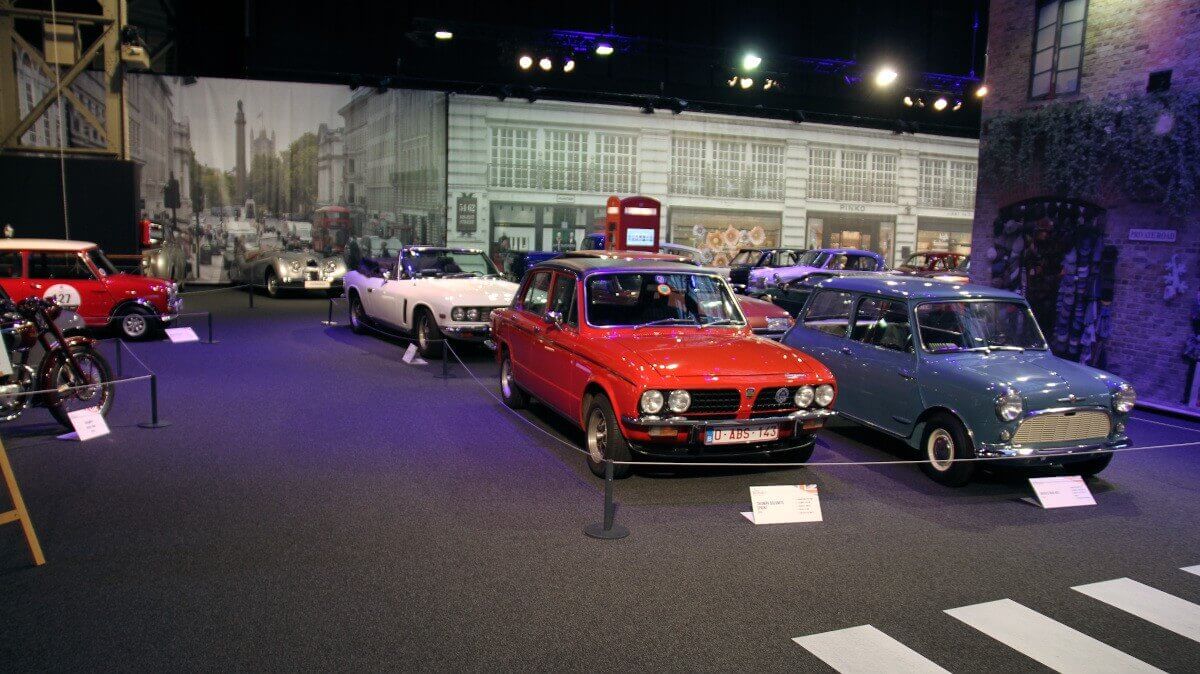



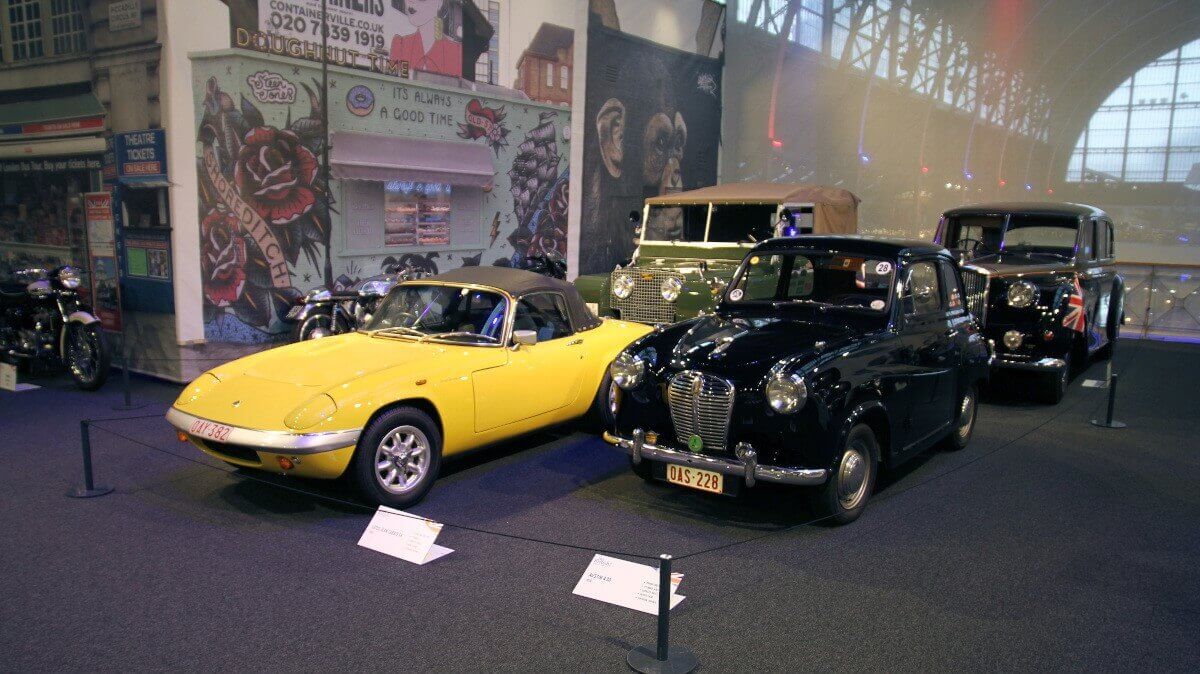



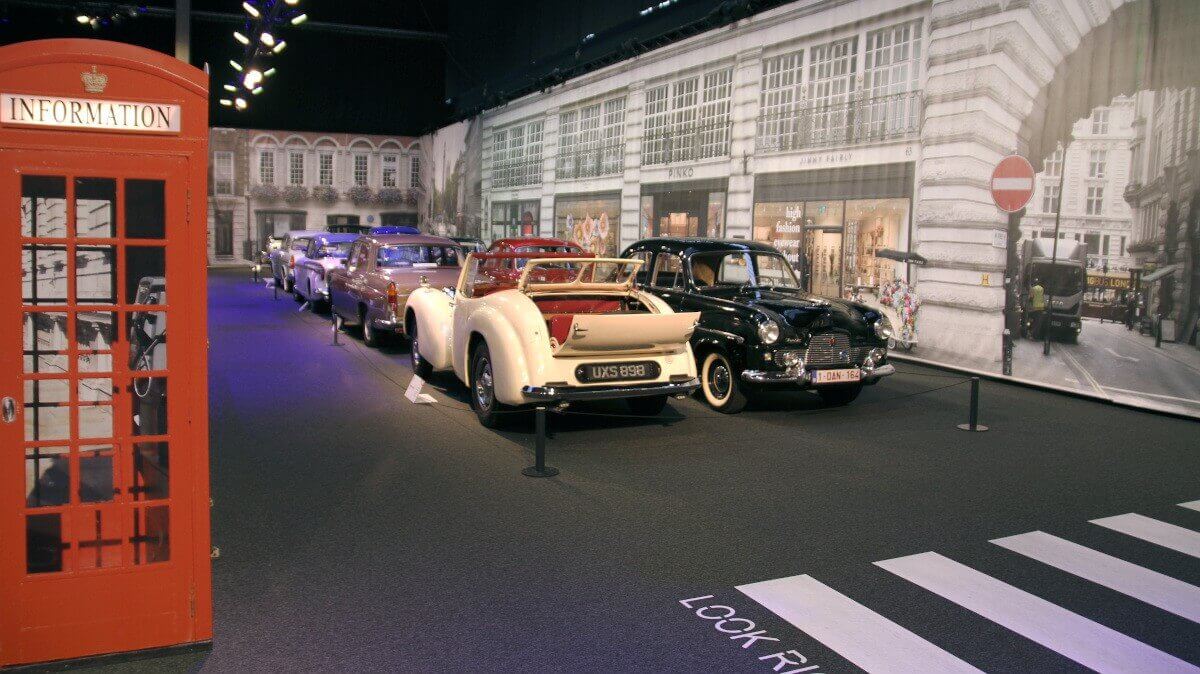



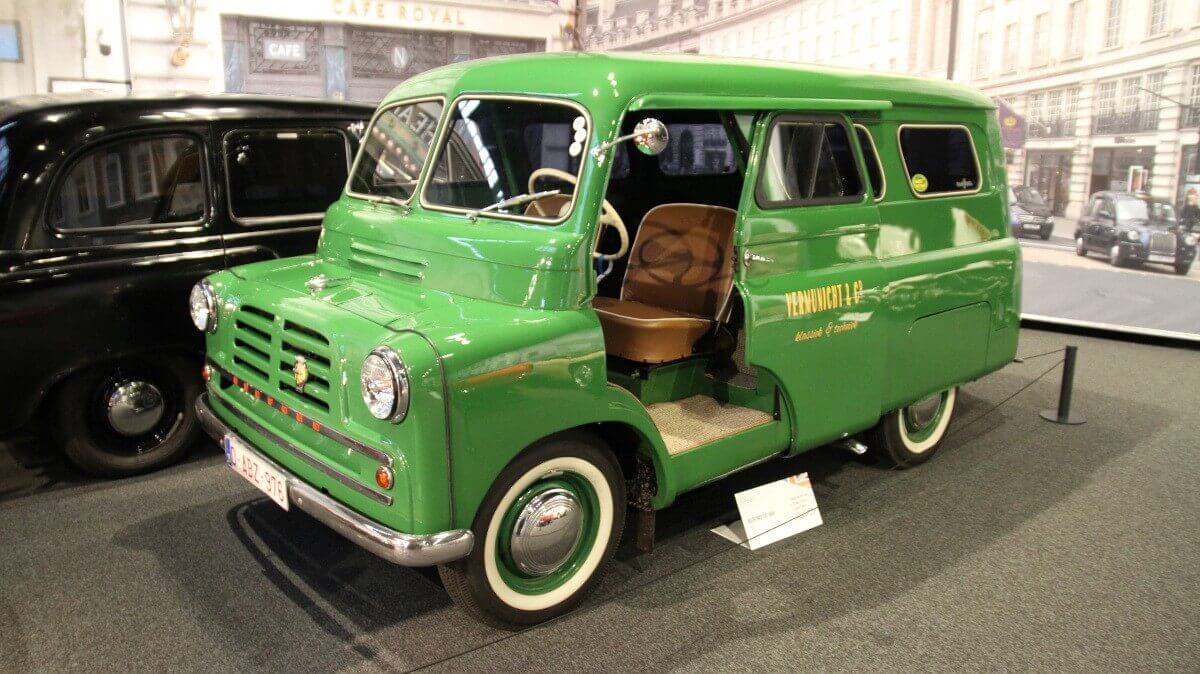



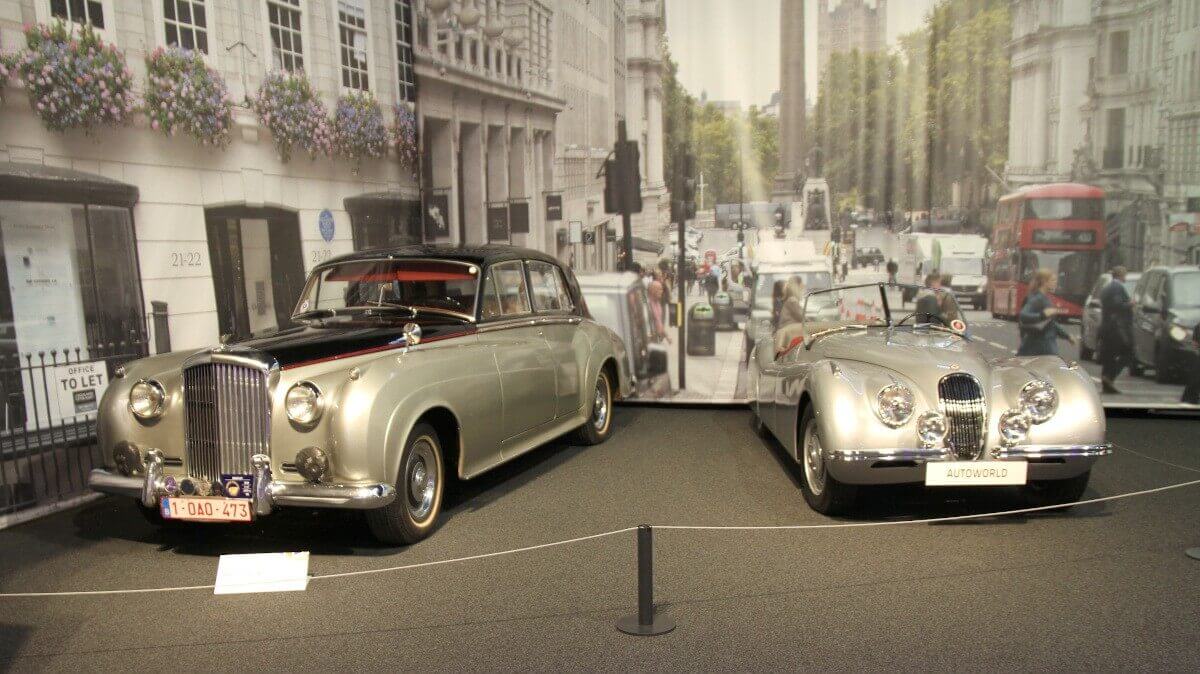



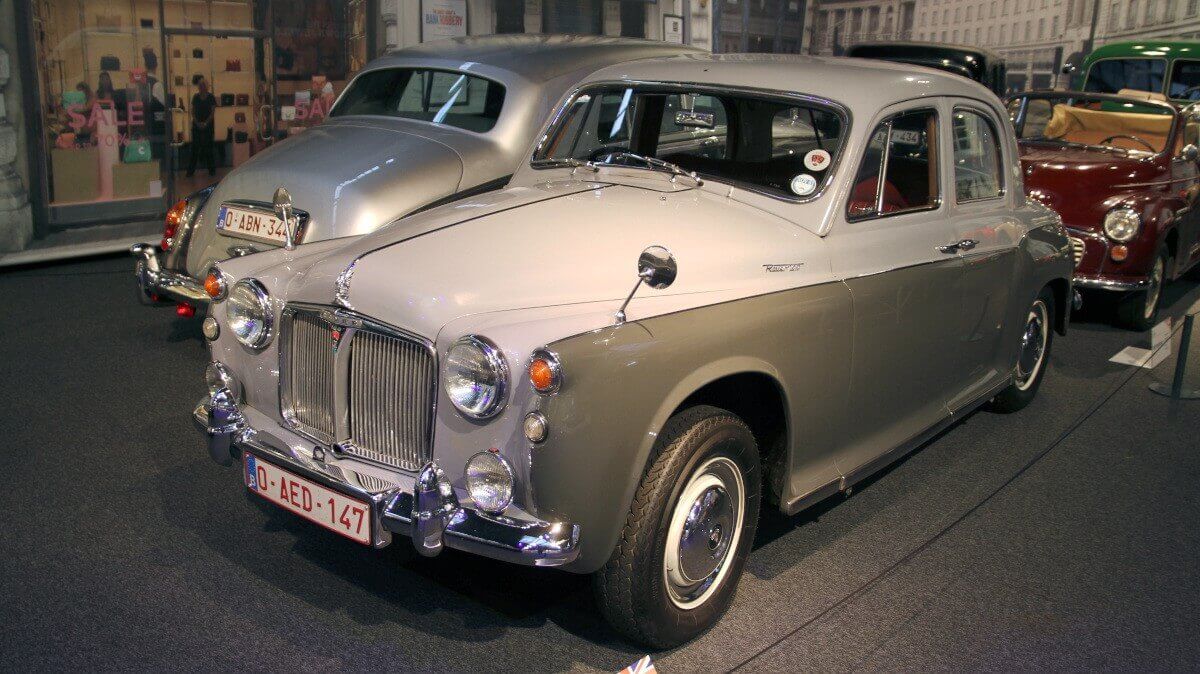



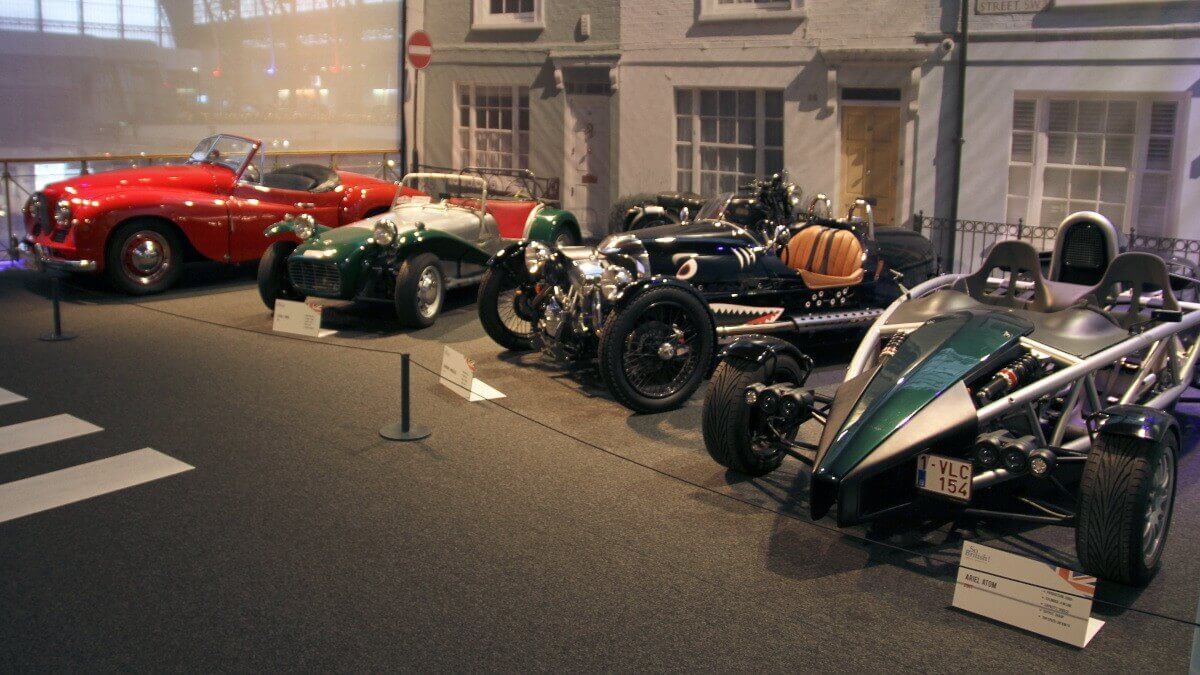



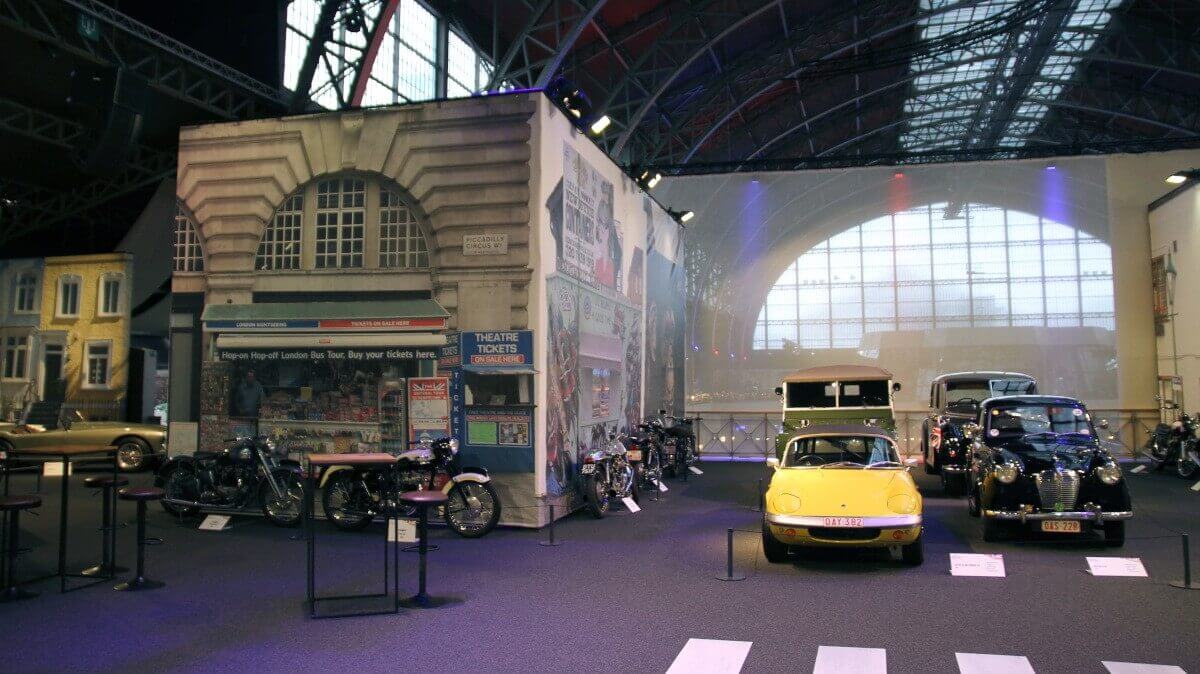



Through specially designed tarpaulins printed with house facades from London, Autoworld creates the impression of walking through the streets of the British capital. At the same time, these rows of houses contain classic vehicles whose year of construction mainly lies between 1950 and 1980. But among the total of 58 cars and approximately 20 motorbikes there are also some vehicles of younger date. For example, a TVR Sagaris as well as the unique Aston Martin DB9 Spyder Zagato Centennial are parked in the same row as a second series Lotus Esprit, a Marcos 3 Litre and an early Jaguar XJ-S.
Eight classic British roadsters from AC, Daimler, Triumph, Morgan, MG, Sunbeam and Austin-Healey are parked in a side street. In the other areas, there are also vehicles from Ford, Wolseley, Rover, Austin, Morris, Jaguar, Rolls-Royce, Bentley, Aston Martin, Gordon-Keeble, Bedford, Lotus, Riley, Land Rover, Jensen, Vanden Plas and Bristol. Great importance was attached to arranging these cars as randomly as possible, just as it would happen in real traffic. In one corner, rare open sports cars such as a Jowett Jupiter, a Lotus Seven, a Morgan Threewheeler and an Ariel Atom were assembled.
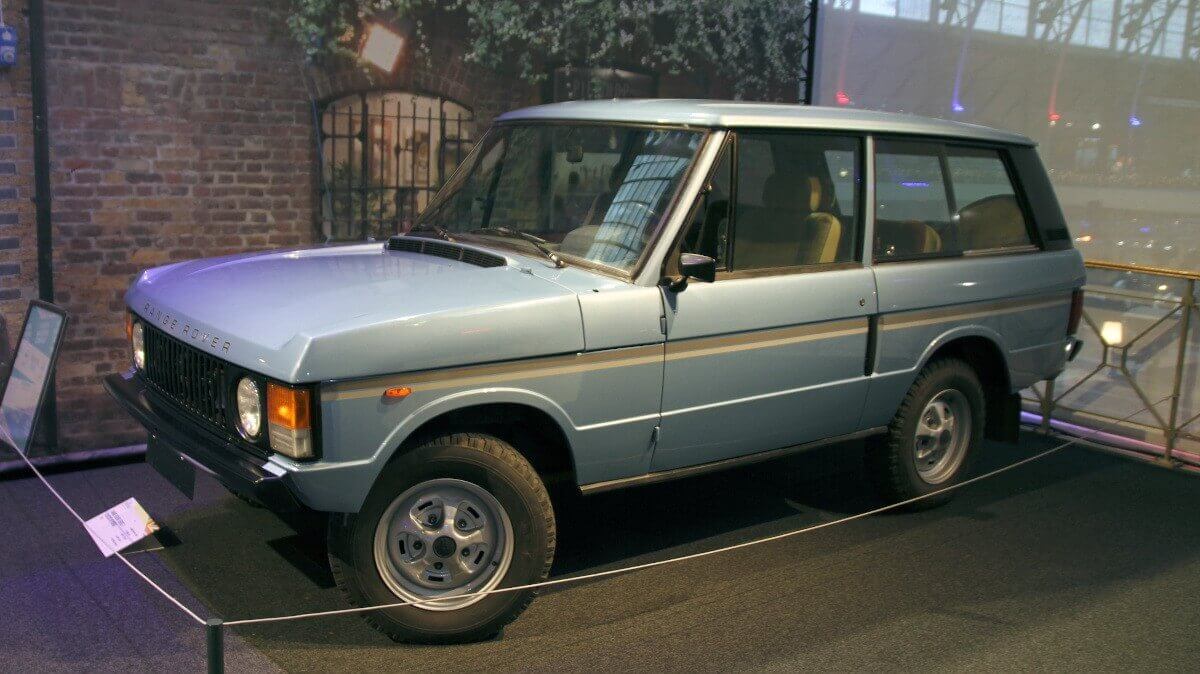



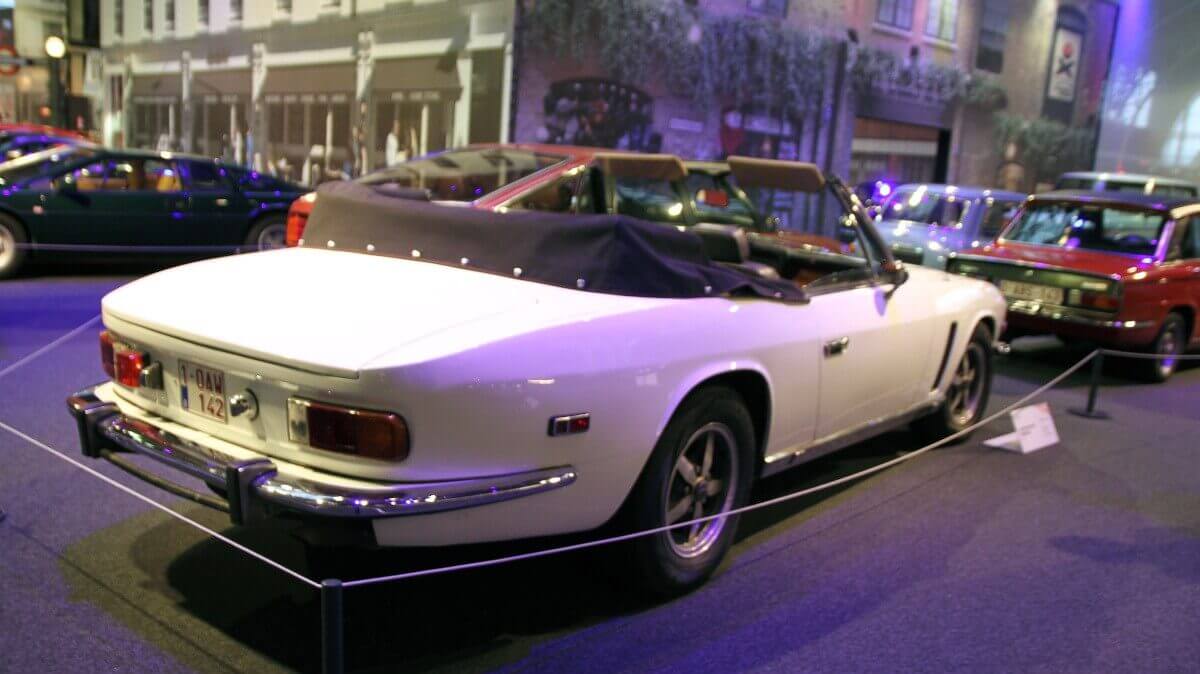



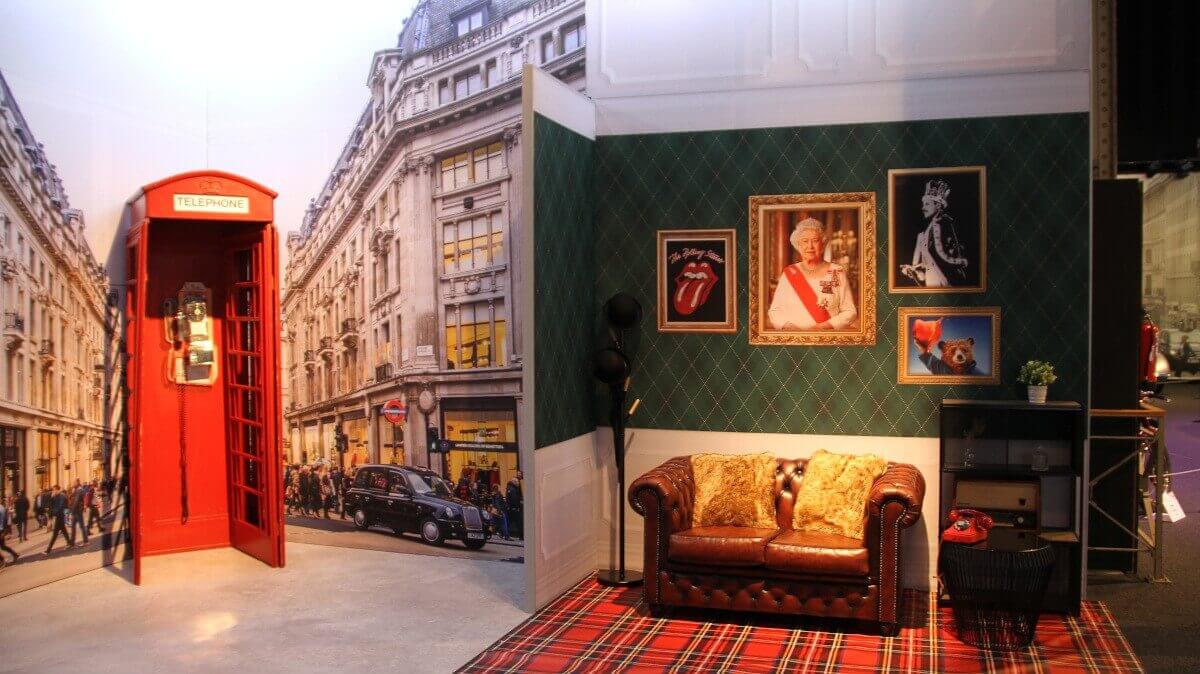



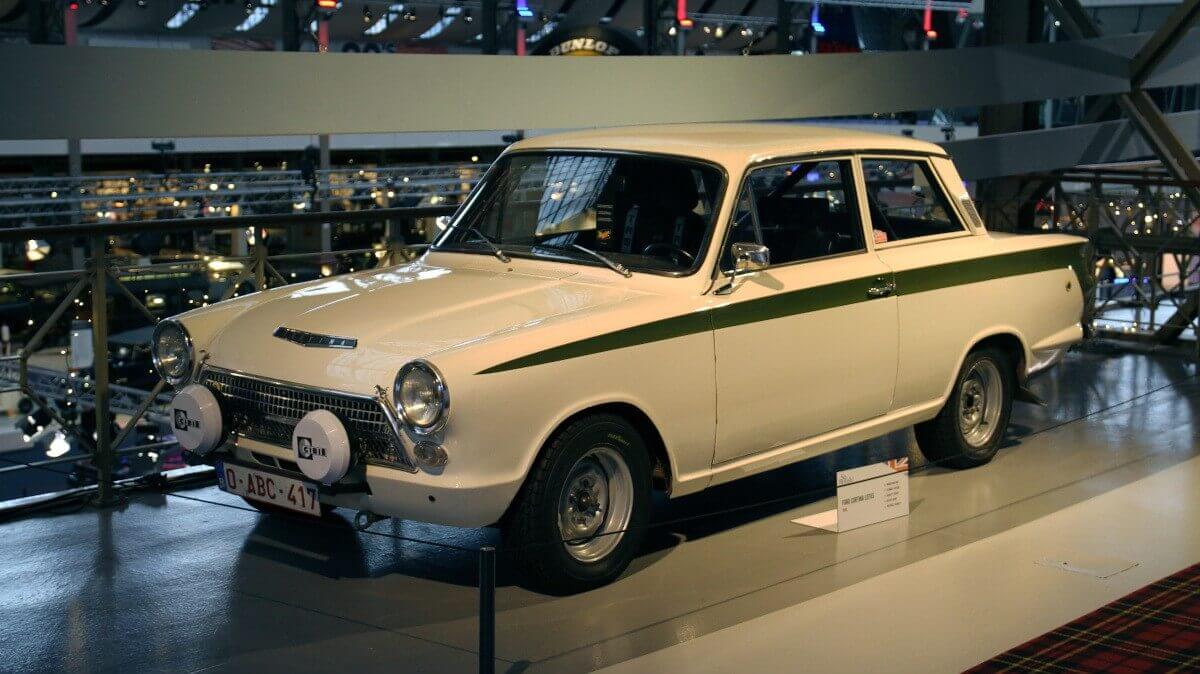



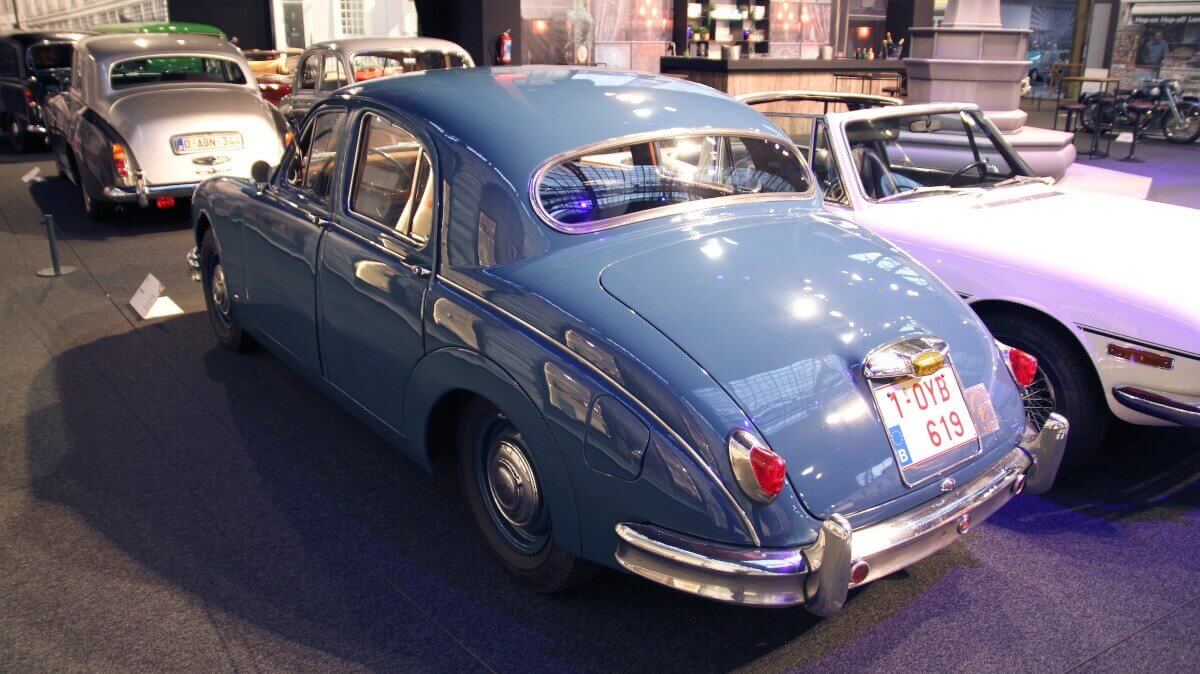



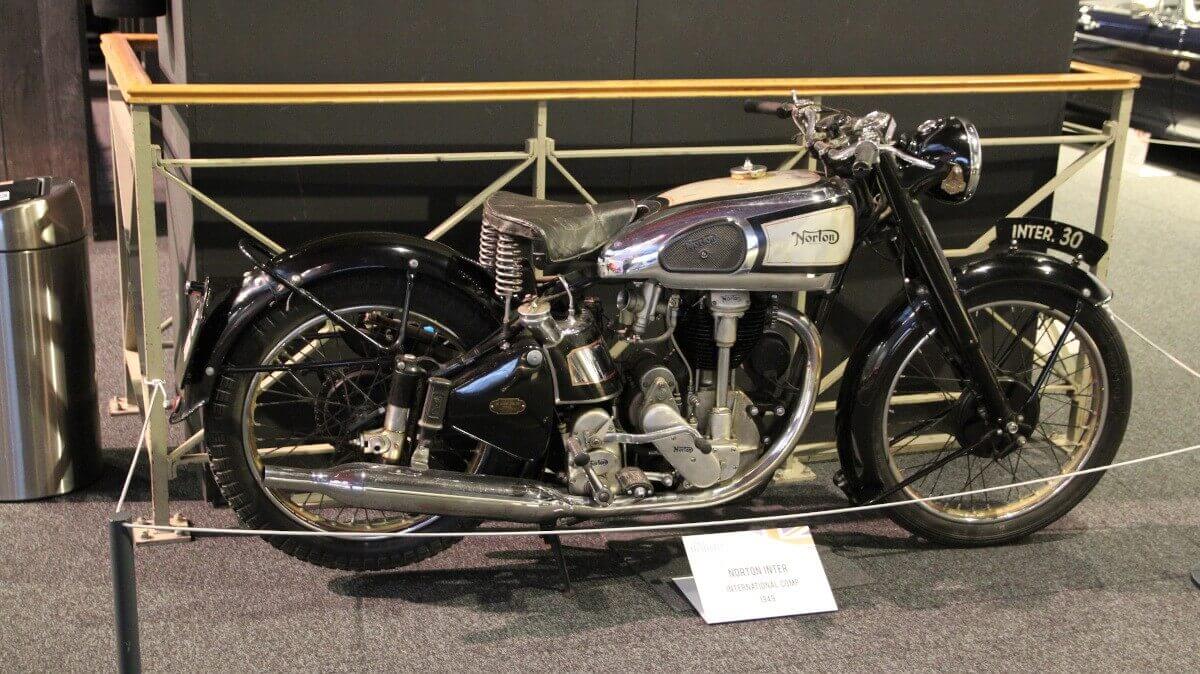



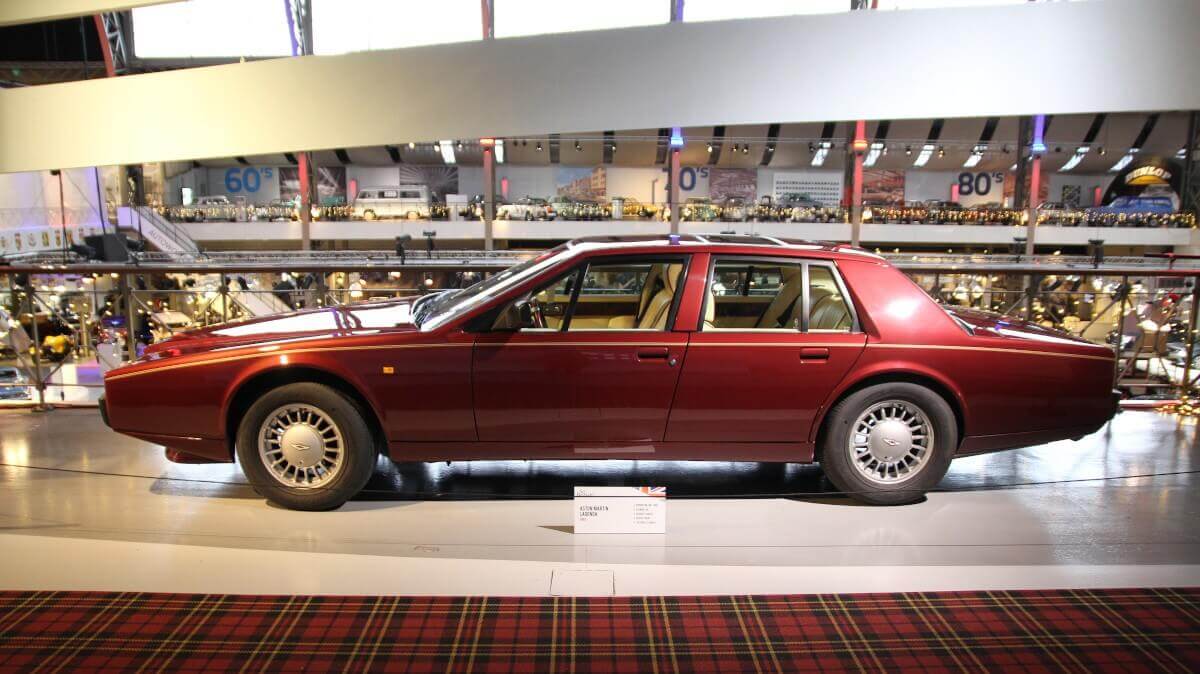



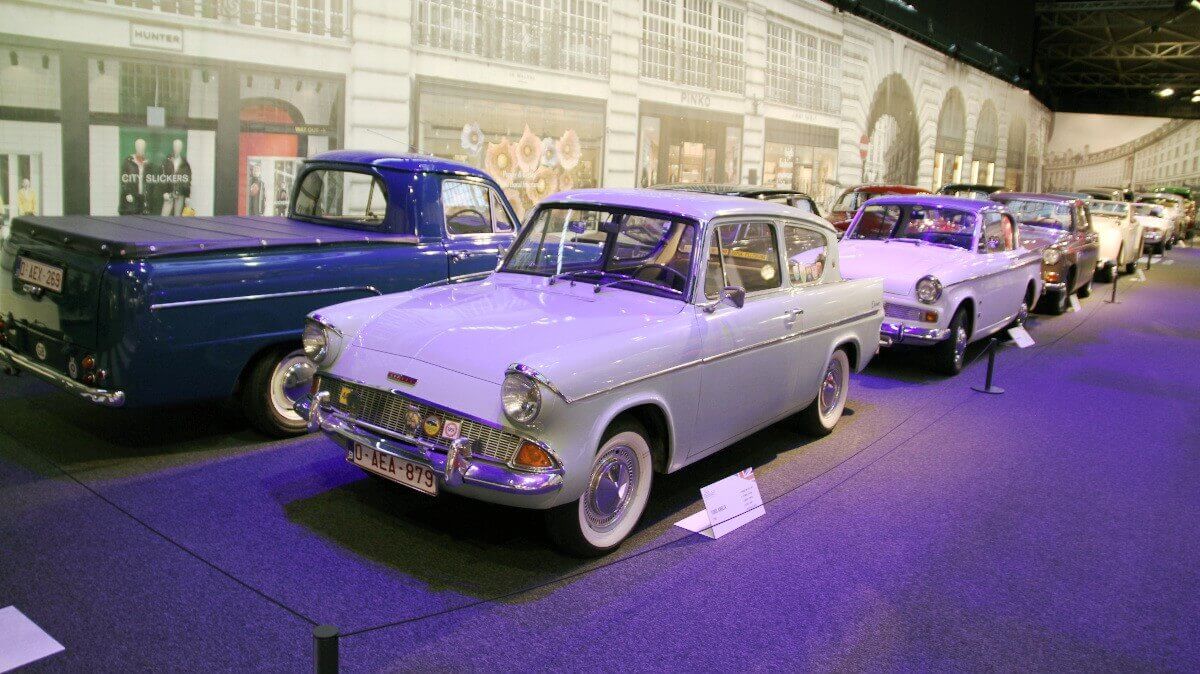



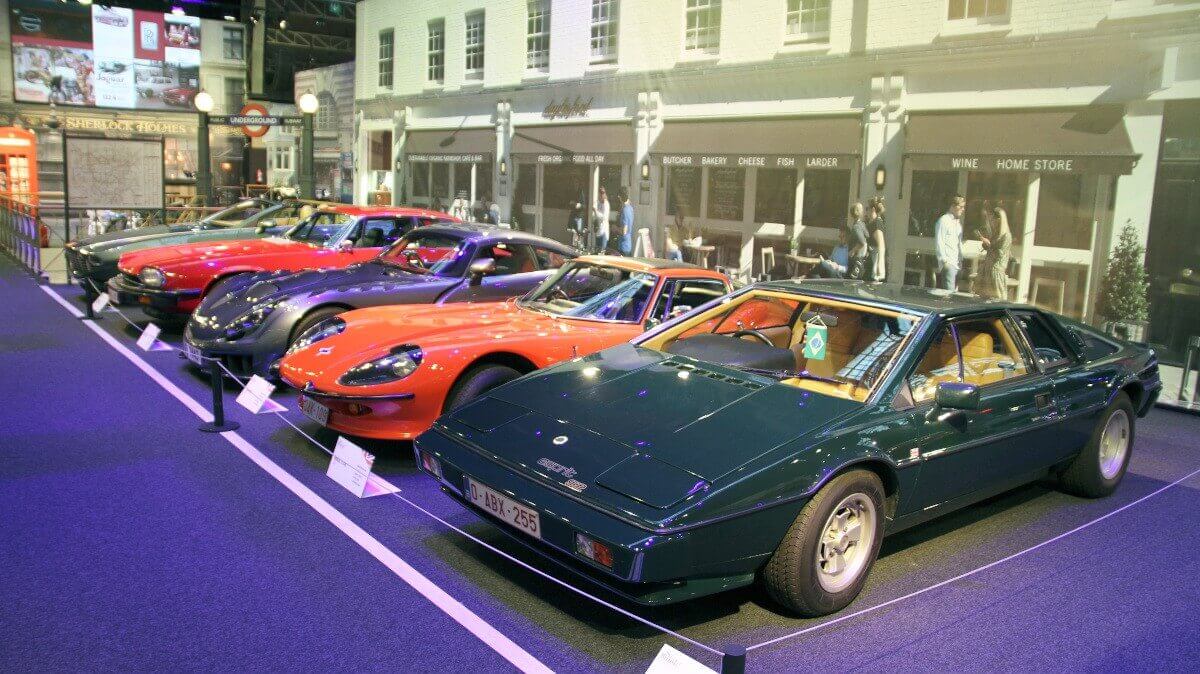



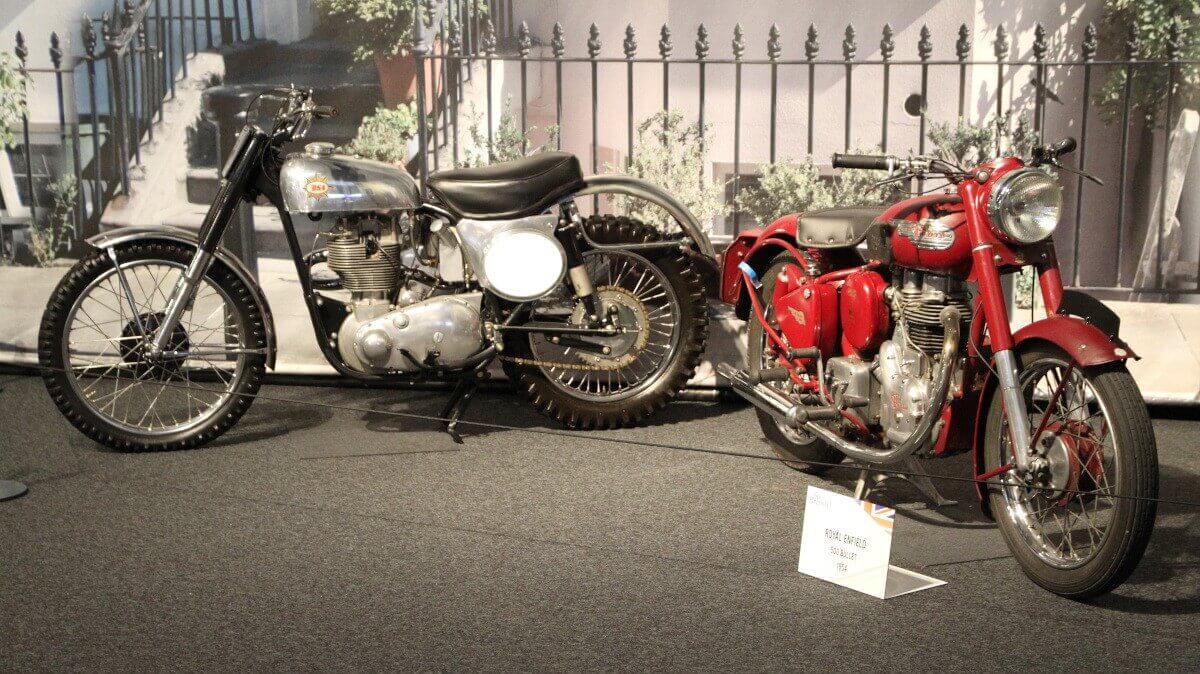



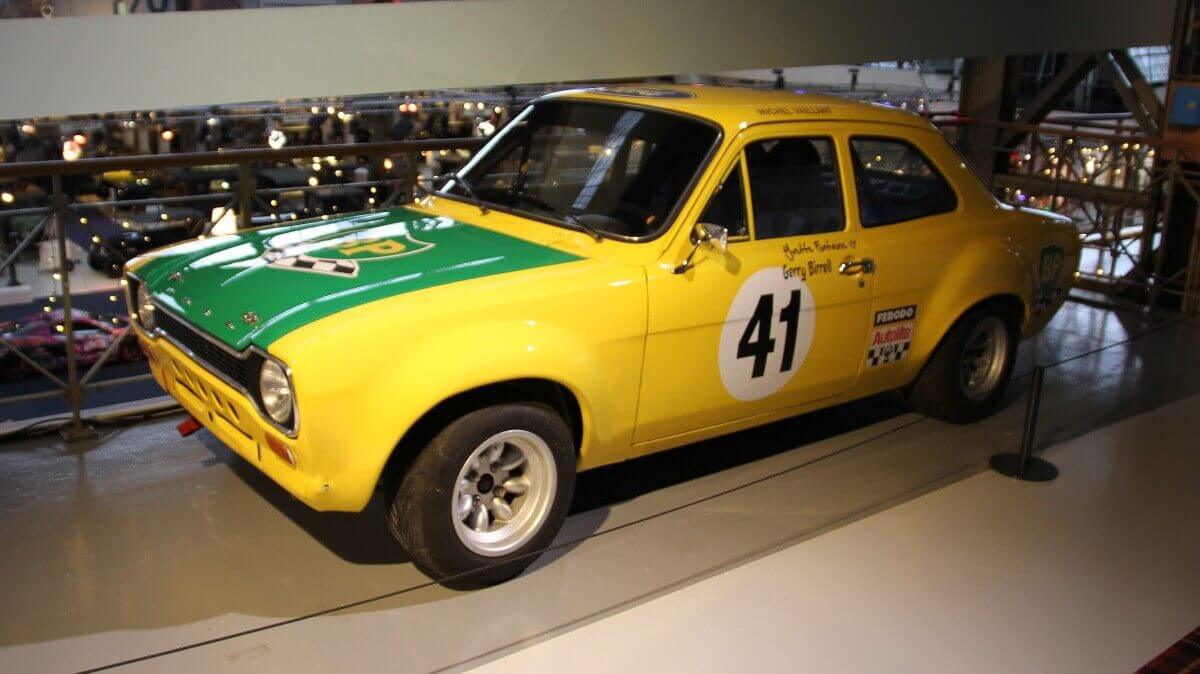



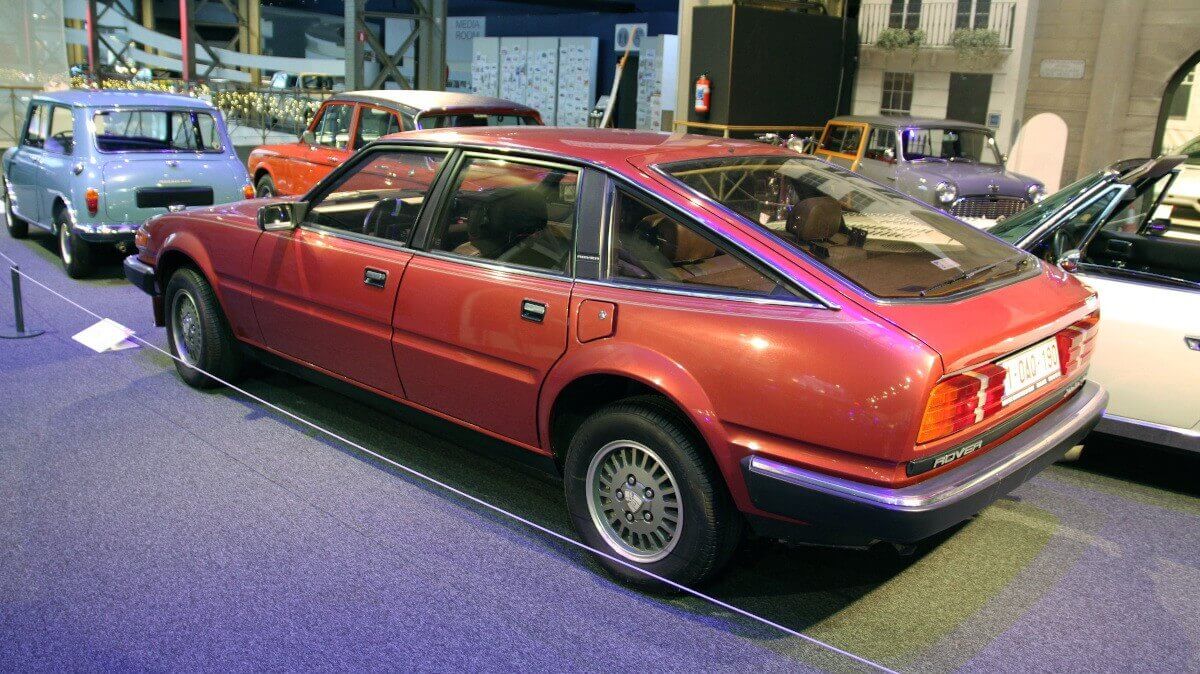



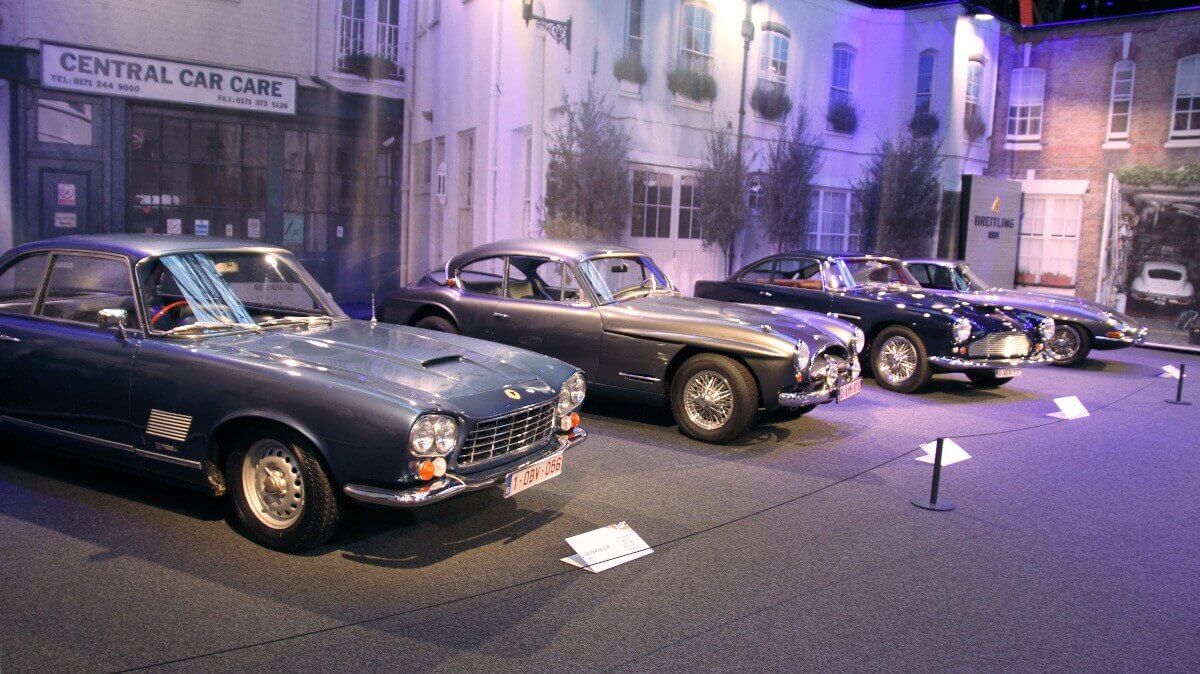



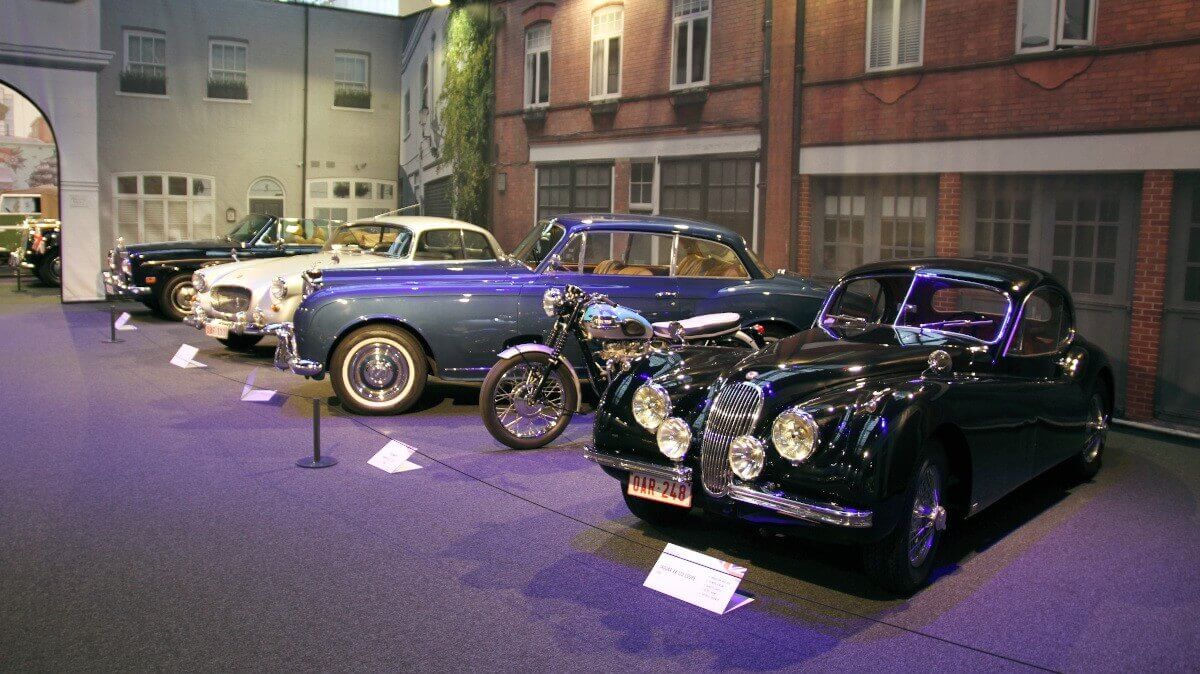



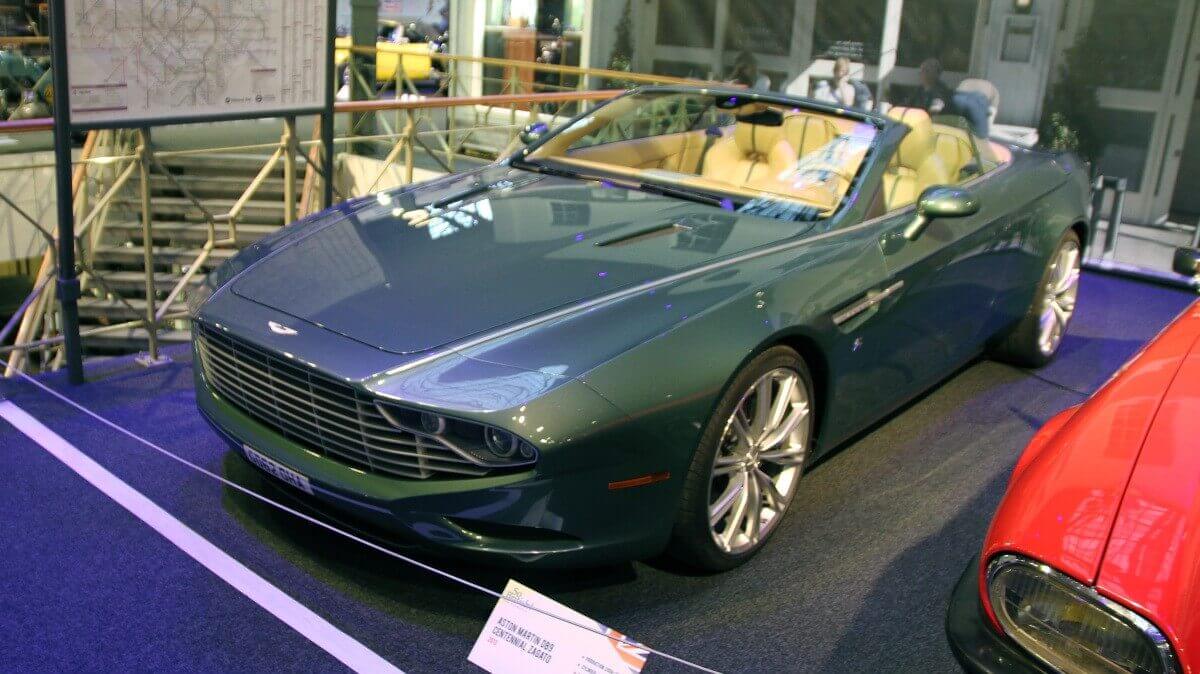



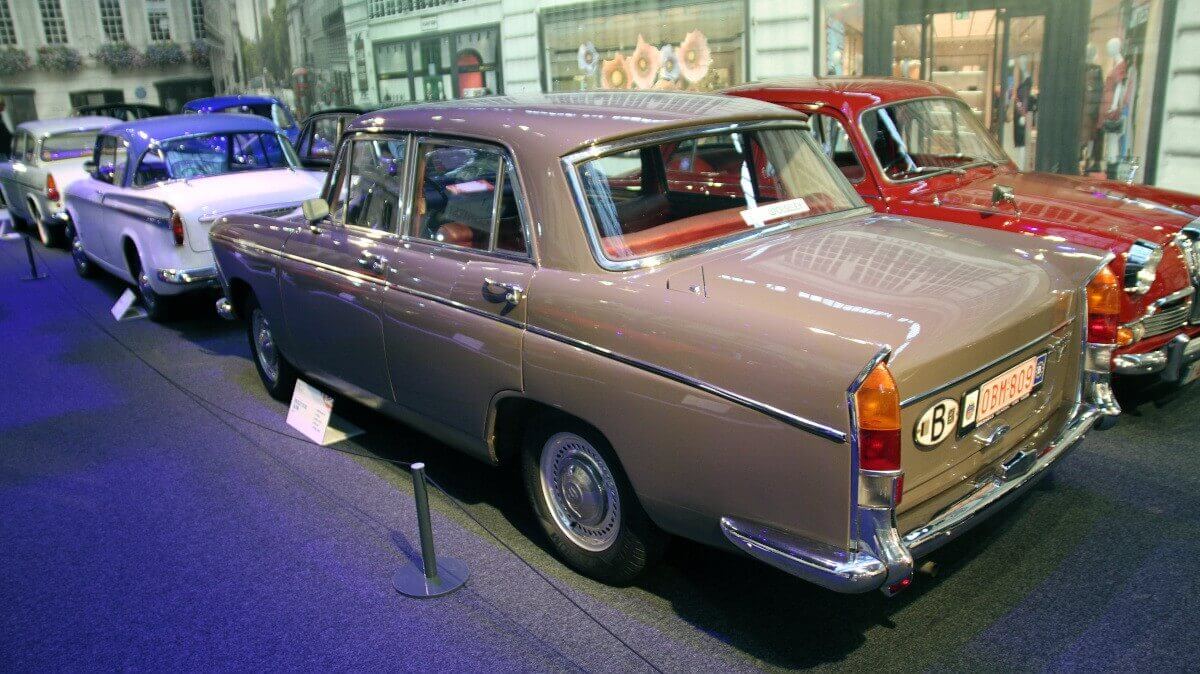



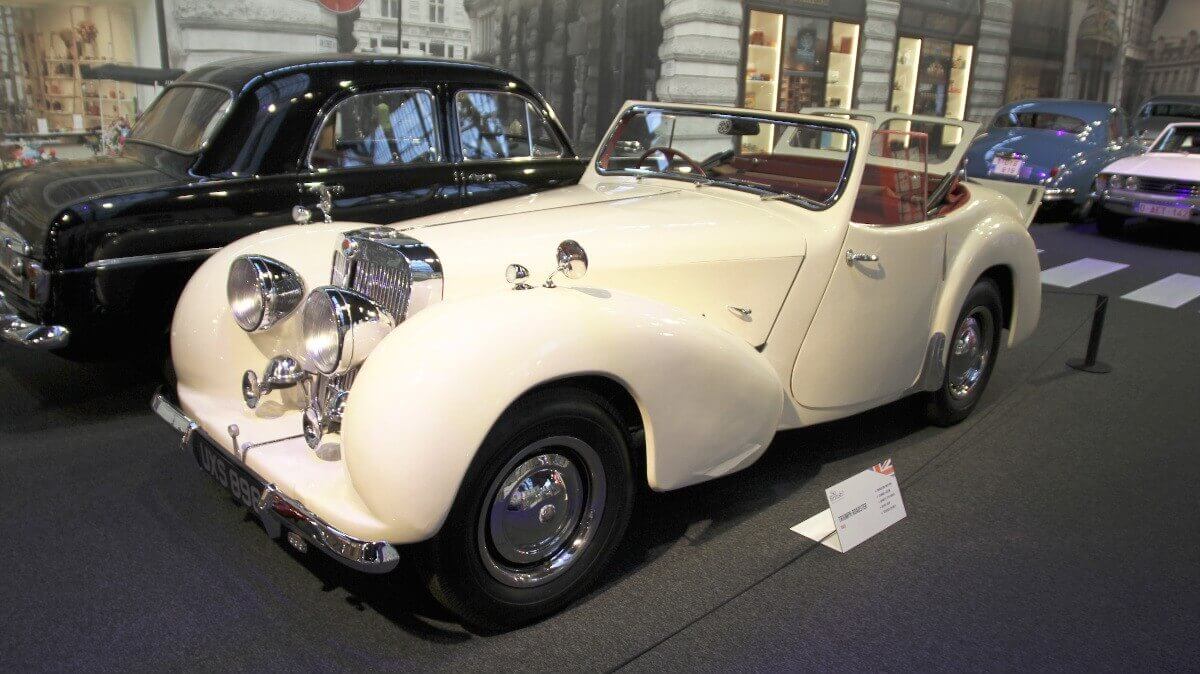



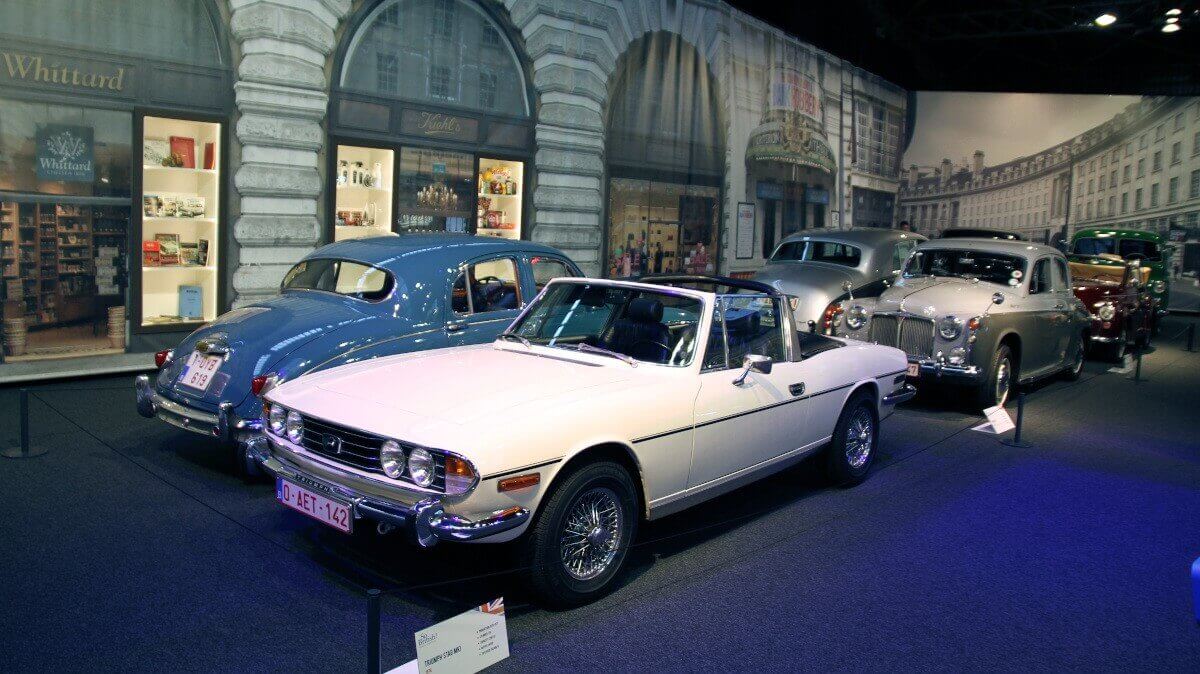



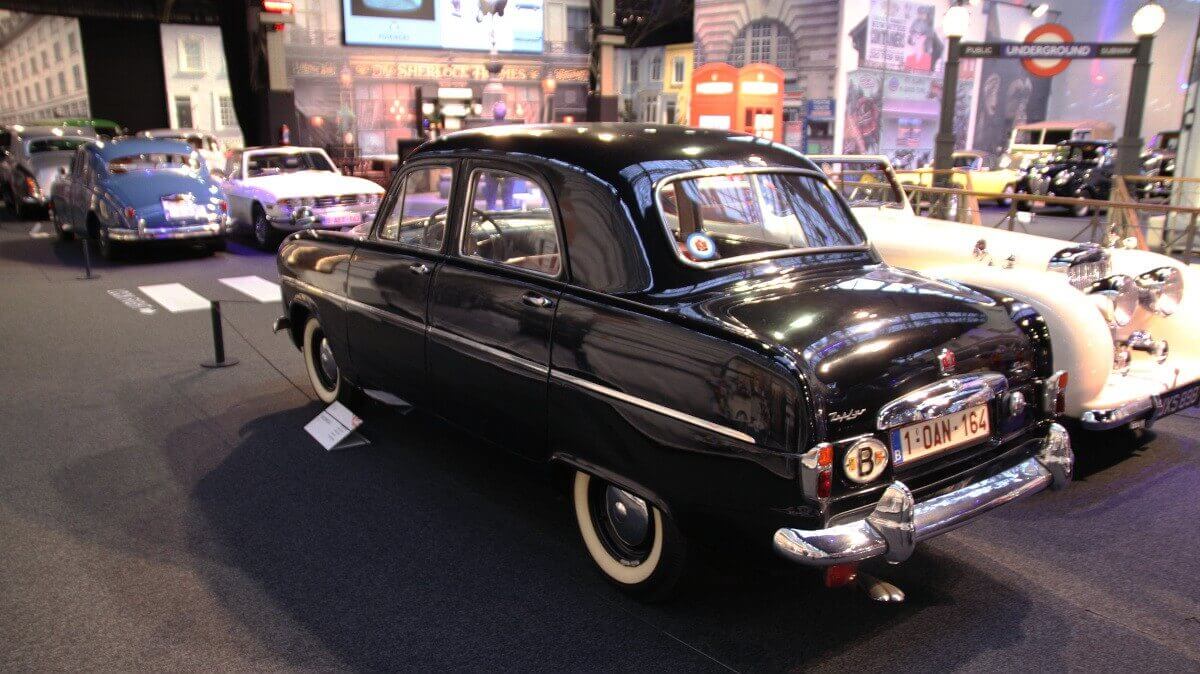



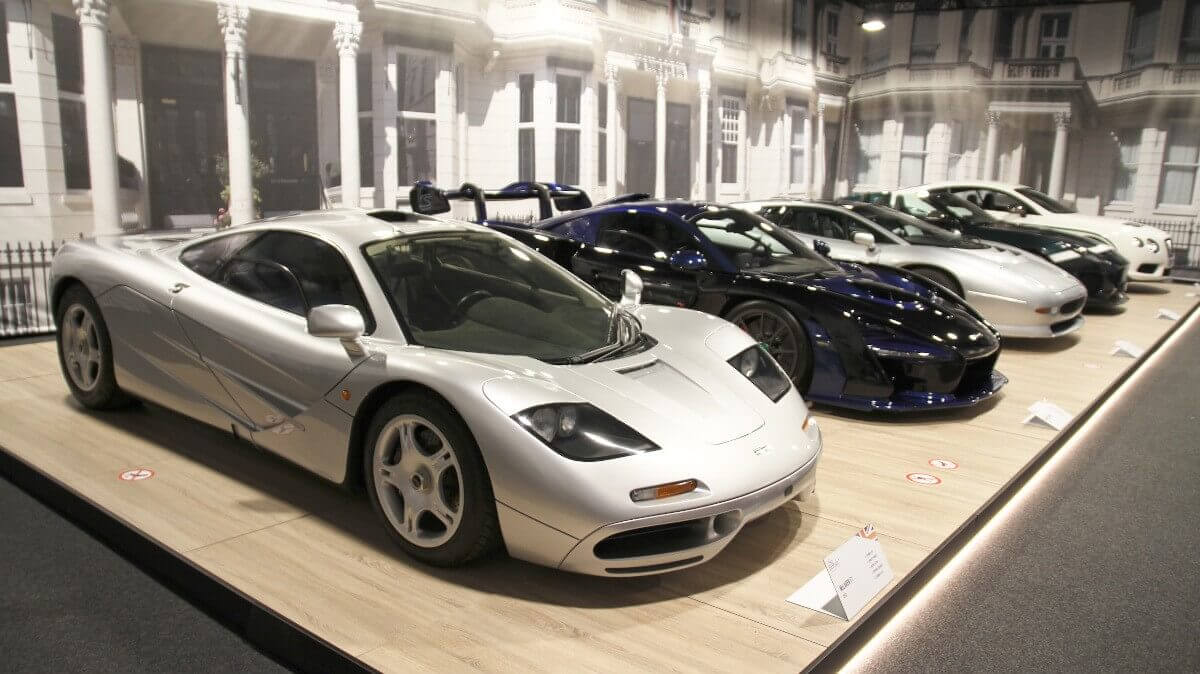



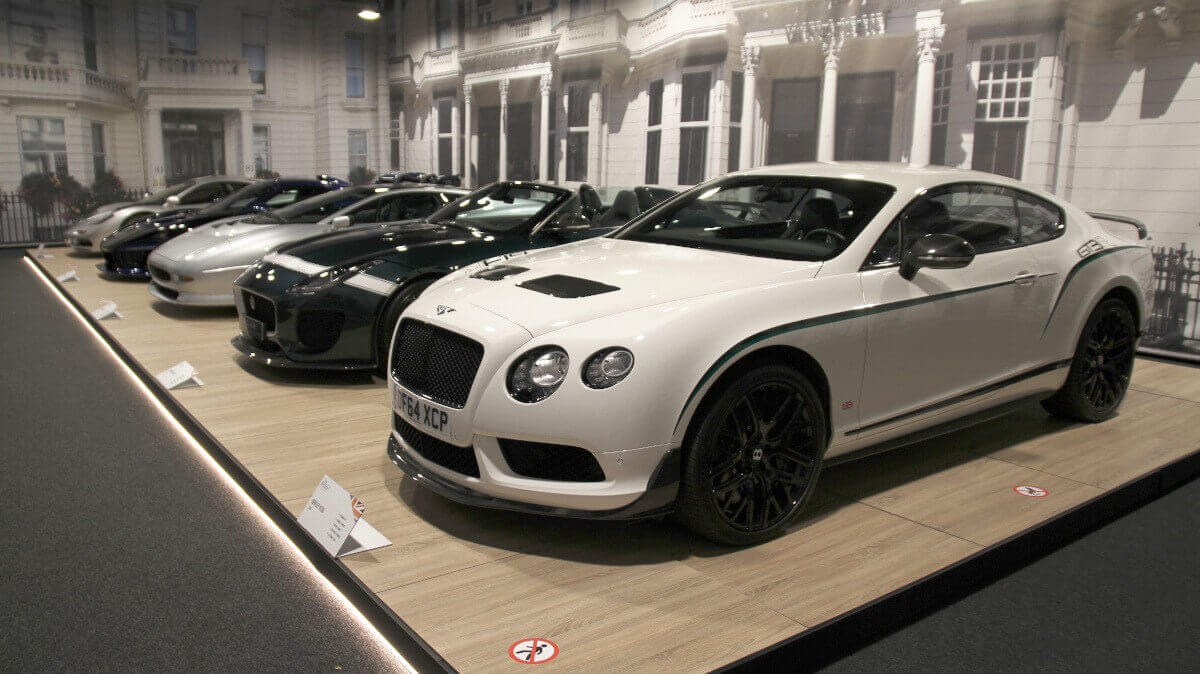



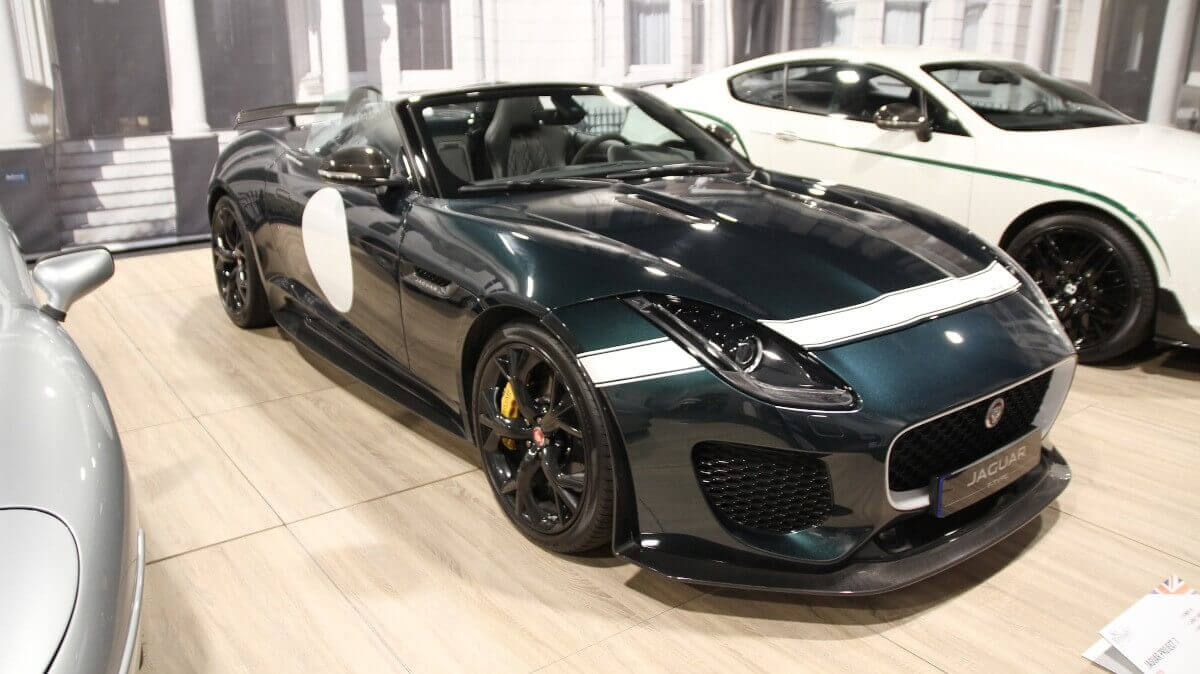



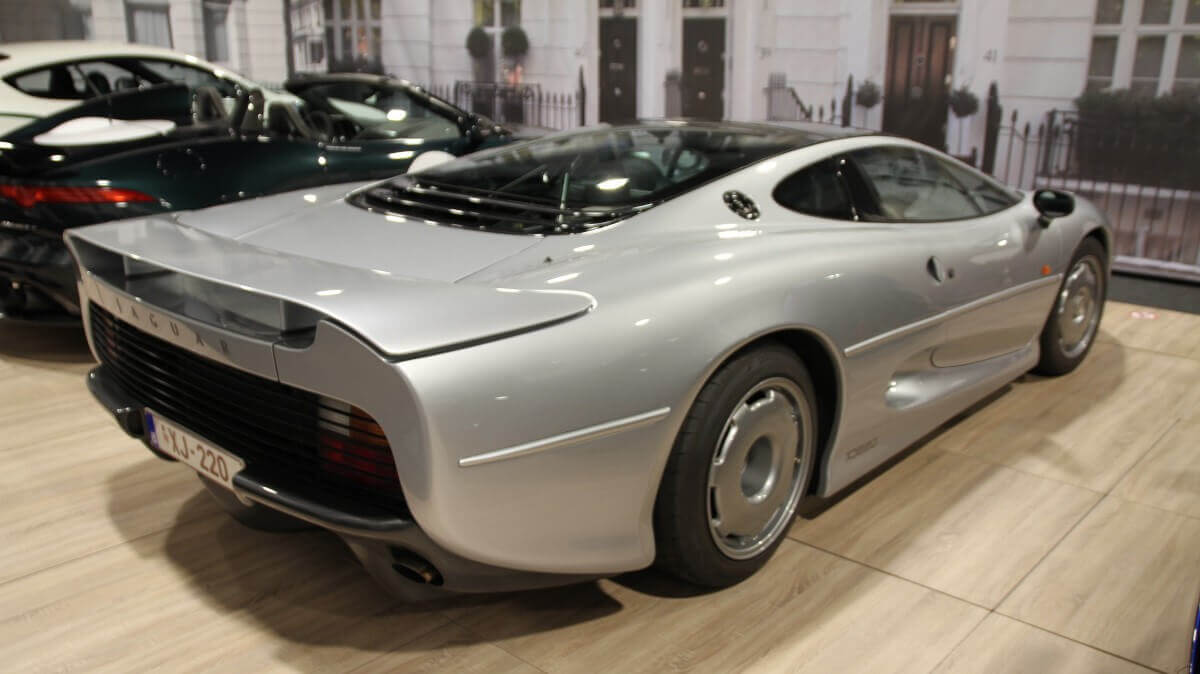



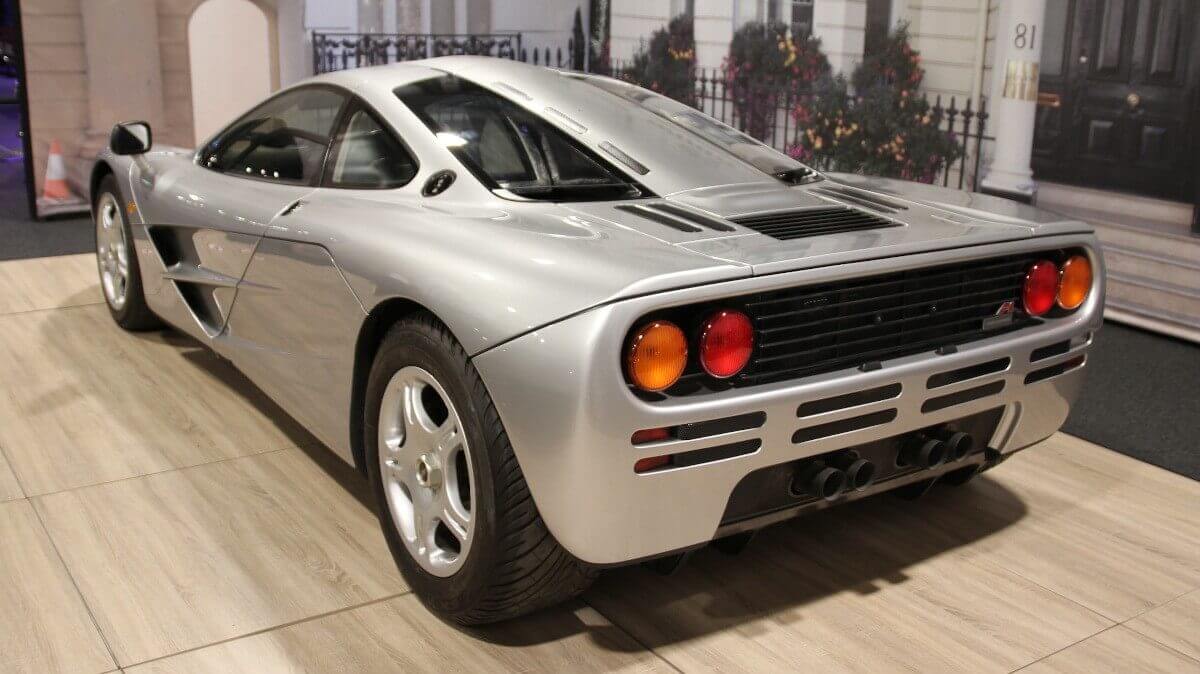



Other typical British cars that are rarely seen in Belgium or Germany are the Jensen Interceptor, the Bristol 406 or the Gordon-Keeble GK1. In addition to sedans and convertibles, a green painted Bedford commercial vehicle and a typical black London Taxi were also in the crowd. Somewhat off the beaten track there was a Ford Lotus Cortina, a Ford Escort Mk I, an Aston Martin Lagonda and a chassis of a McLaren MP4-12C.
For fans of modern sports cars there is a special side street where five vehicles are gathered together. In addition to a Jaguar XJ220, a Jaguar F-Type Project 7 and a Bentley Continental GT3R, two special McLaren cars stand on a podium here. The first is a specially individualised Senna with various accents in blue bare carbon fiber. On the other hand, the BMW Classic collection contributed an absolutely original McLaren F1. This supercar alone, which to this day holds the speed record for production cars with naturally aspirated engines, represents an eight-figure Euro amount. So a trip to Autoworld is definitely worthwhile.
Images: Matthias Kierse


